Experimenting with finishing materials is no longer a novelty in modern interior design. Now it applies not only to bedrooms, living rooms, or kitchens but also to bathrooms. In this article, we’ll try to figure out what materials are best to choose for bathroom walls and what to pay attention to when buying!
Features of the Room
With bathroom finishing, there are quite obvious difficulties: it is often small, cramped, with constant lack of light, and not perfect walls. Especially if your apartment is in an old residential building that hasn’t seen a major renovation in many decades.
Be sure to check the condition of the pipes and wiring – if necessary, replace them immediately at the preparatory stage. If your bathroom has a classic single bulb over the entrance, consider installing additional light fixtures in advance. Be sure to use primer with additives against mold, as it’s quite humid in the bathroom.
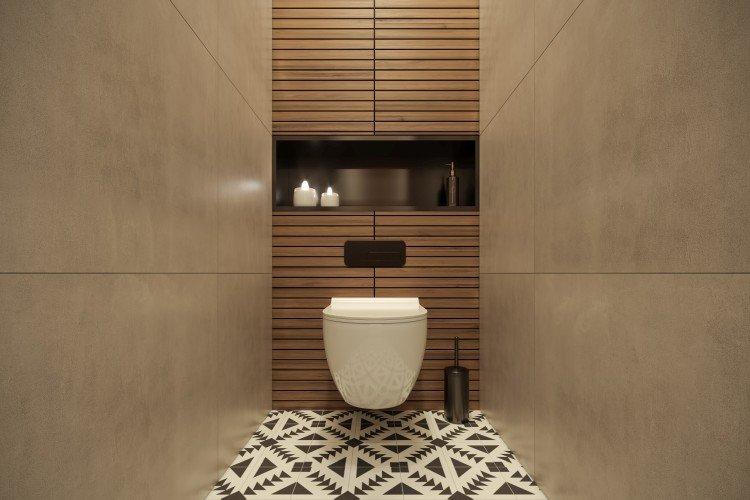
Finishing materials need to be sturdy and wear-resistant, reliable, and durable. In a small bathroom used by all family members, guests, and pets – this is especially important. They must be moisture-resistant, not darken, fade, discolor, swell, or deform.
Moisture and poor ventilation lead to mold formation, so take care of that as well. Ideally, choose finishes without seams or treat them regularly. All these materials must be hygienic and easy to clean, as the bathroom gets dirtier faster than any other room.
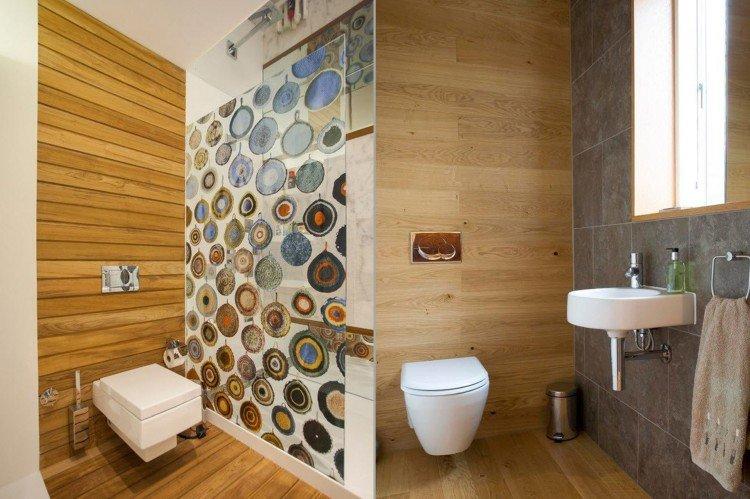
Color Solutions
For small rooms, light shades are best: white, milky, beige, pale gray. If you want to add some color – use the entire pastel range. For spacious bathrooms, confidently take noble brown, elegant sand, or stylish graphite with matte black plumbing.
Classic minimalism is white walls with snow-white plumbing, chrome details, and black contrasting elements. Bright glossy accents will help refresh and dilute the interior: red, blue, green, orange, raspberry. Blue, turquoise, mint, and pistachio are excellent for relaxing and give a feeling of freshness.
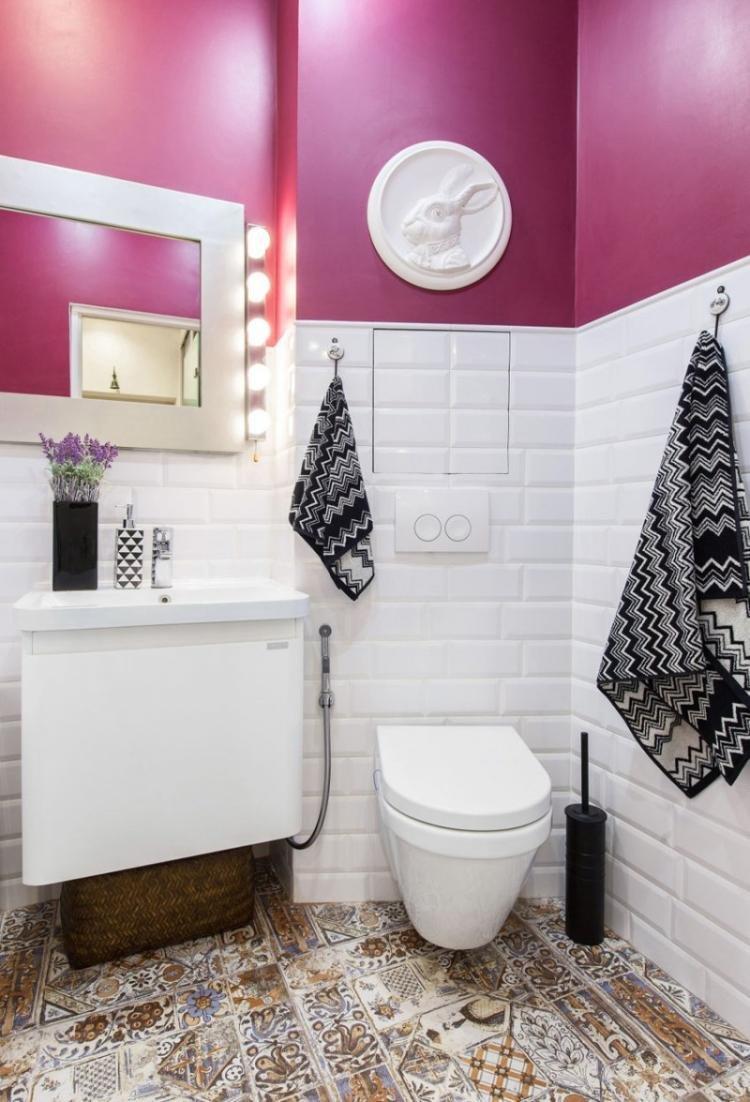
Finishing Materials
Before wallpapering or tiling the walls in the bathroom, they need to be put in order. Remove the old covering completely to the base, fill in the main cracks and irregularities. If you plan to paint or glue wallpaper – level the base and prime it in advance, although this is not necessary for panels or drywall.
Ceramic Tiles
Ceramic tiles are the most popular and obvious choice for bathroom decoration, available in different sizes, shapes, patterns, and textures. You can create a seamless look by using the same tiles on both the walls and floors – just select collections based on their purpose and load capacity.
While tile installation can be time-consuming and require proper wall leveling and joint sealing, the advantages outweigh the downsides. Tiles are practical, low-maintenance, and versatile. They resist moisture, do not absorb odors, and are easy to clean. Porcelain tiles and tiles retain their appearance for decades, making them ideal if you’re not a fan of frequent updates. The coating is difficult to damage or scratch, which is useful if you have pets.
Choose from a wide range of options, including monochrome minimalism, original ornaments, and even pre-made mosaics. There are not many downsides to tiles, and they are mainly related to installation: it takes longer, and you need to level the walls perfectly and neatly seal the joints with putty.
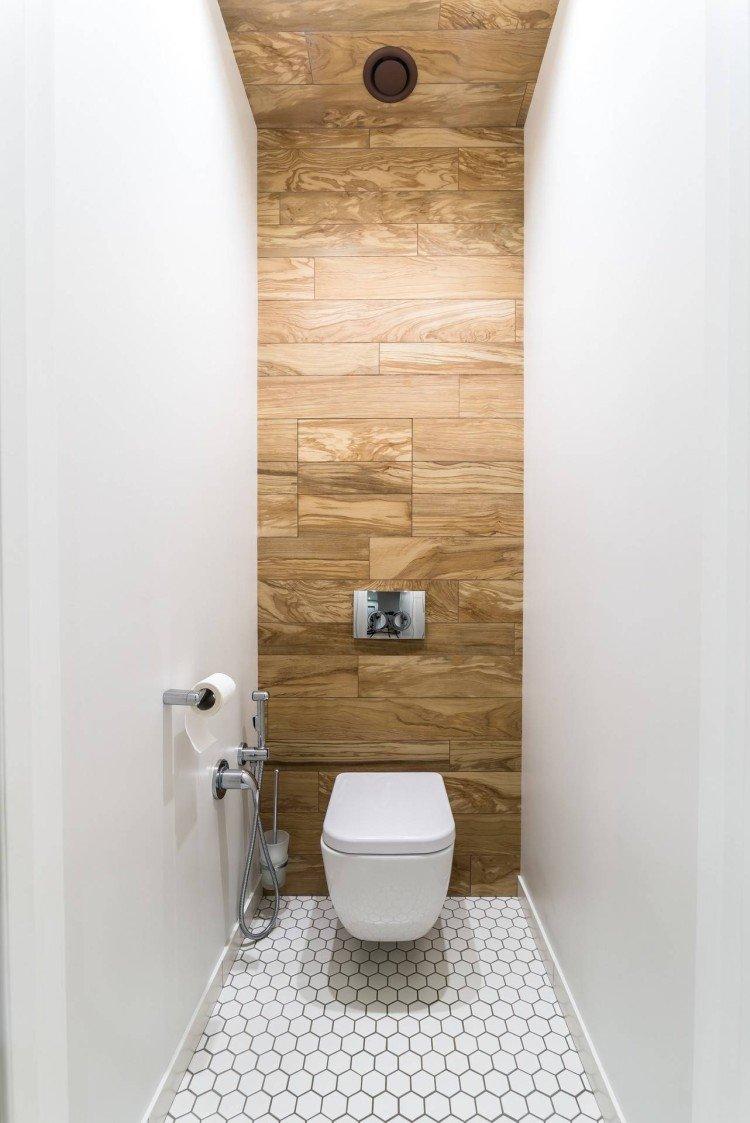
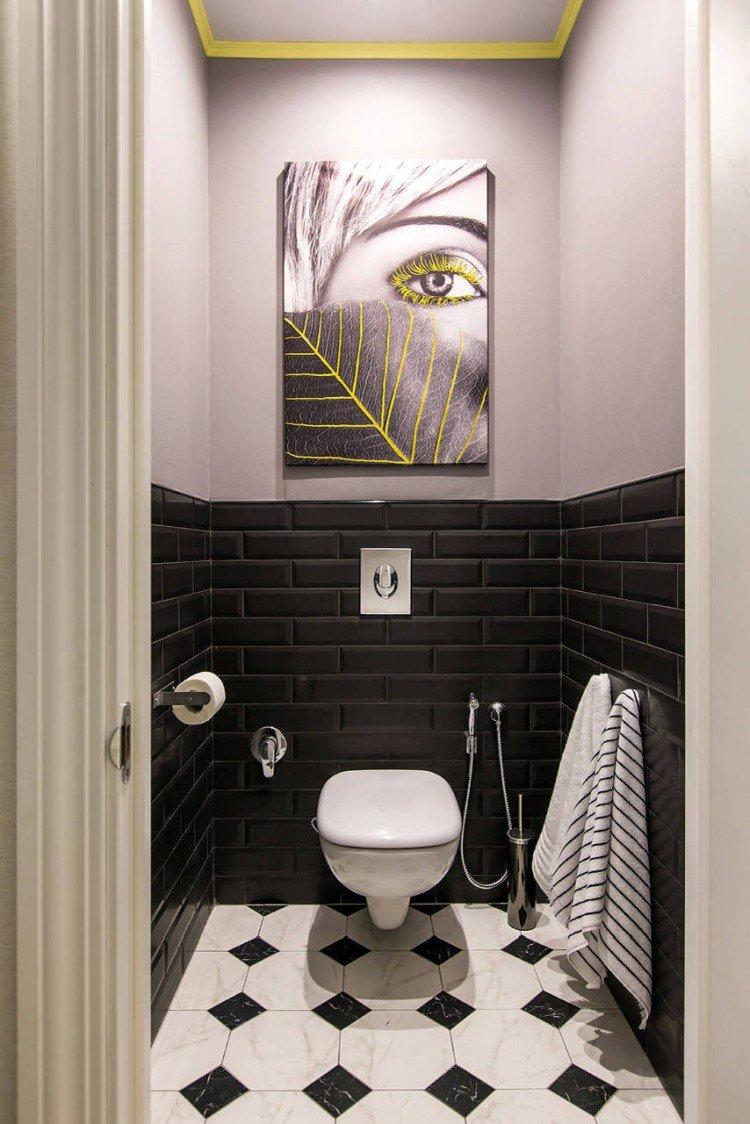
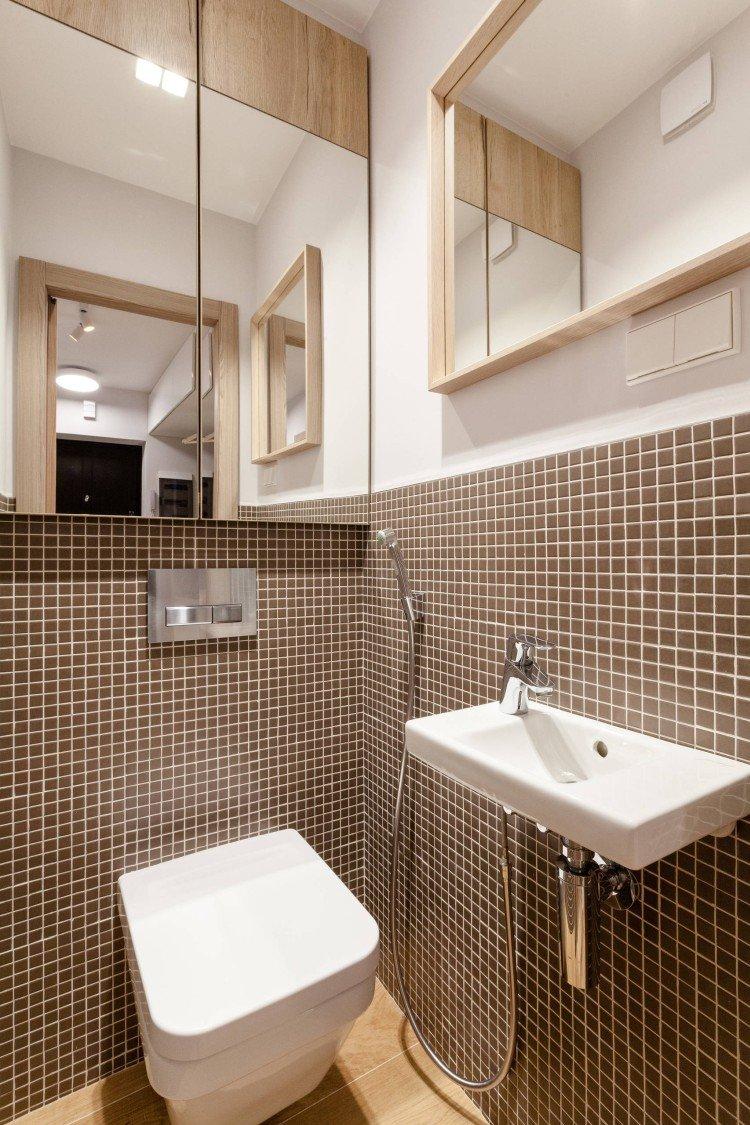
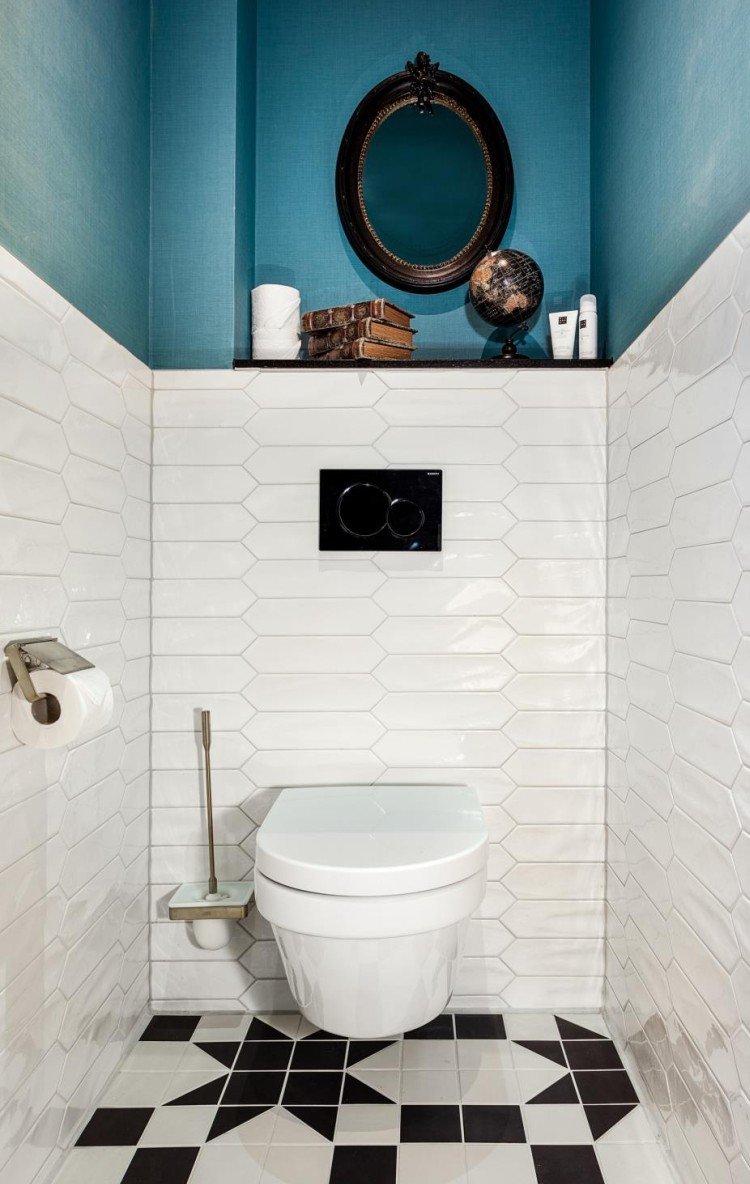
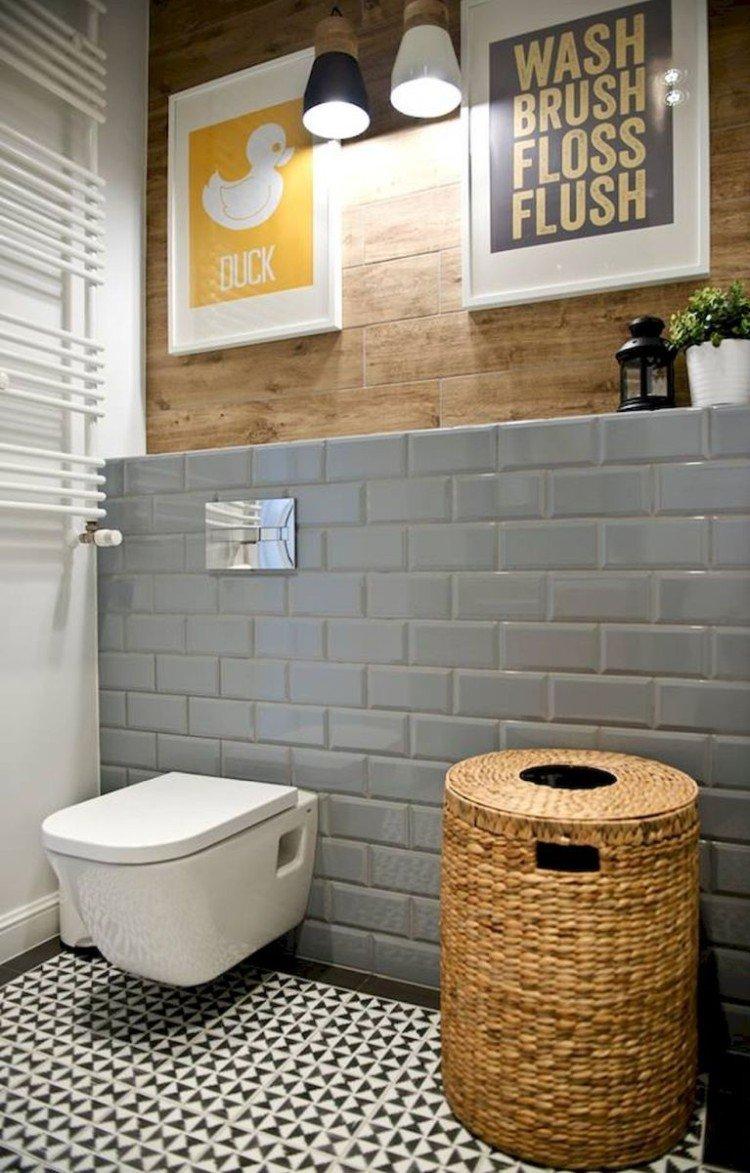
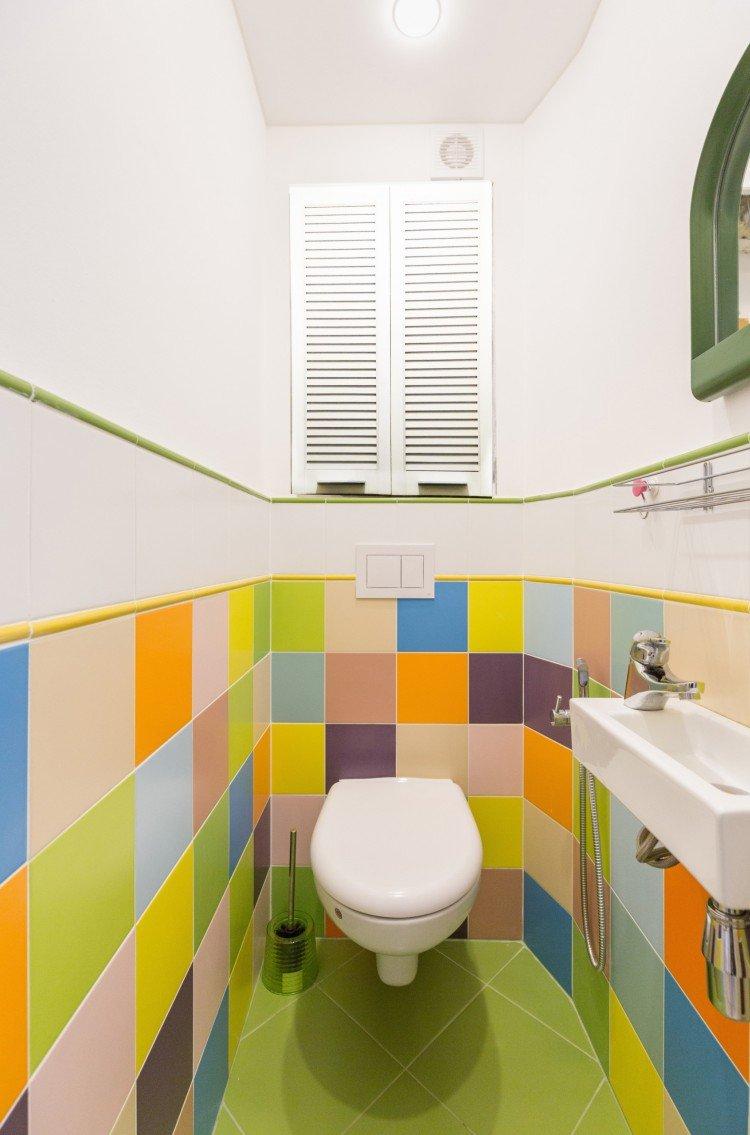

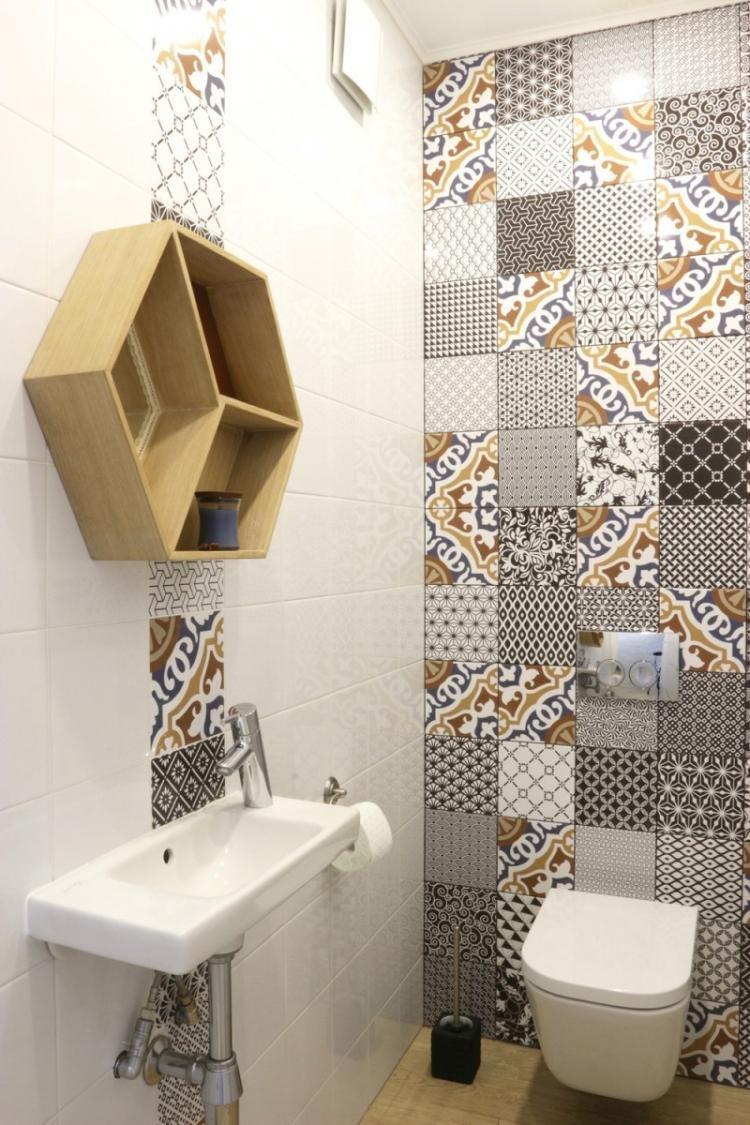
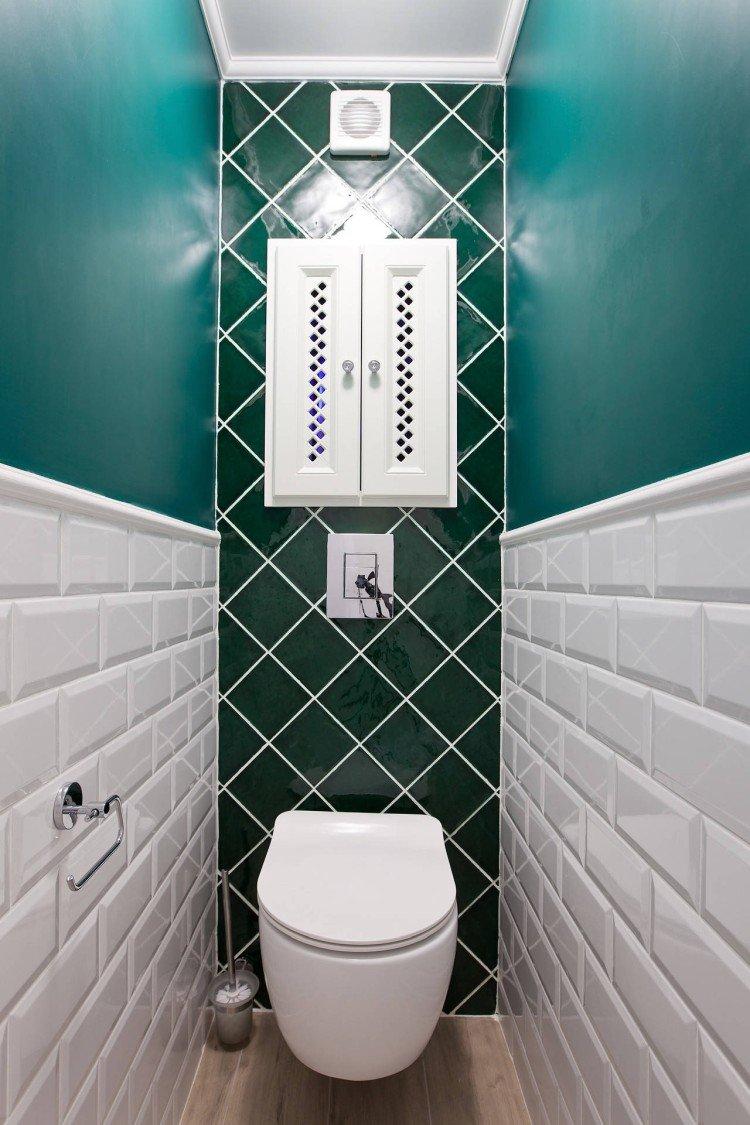
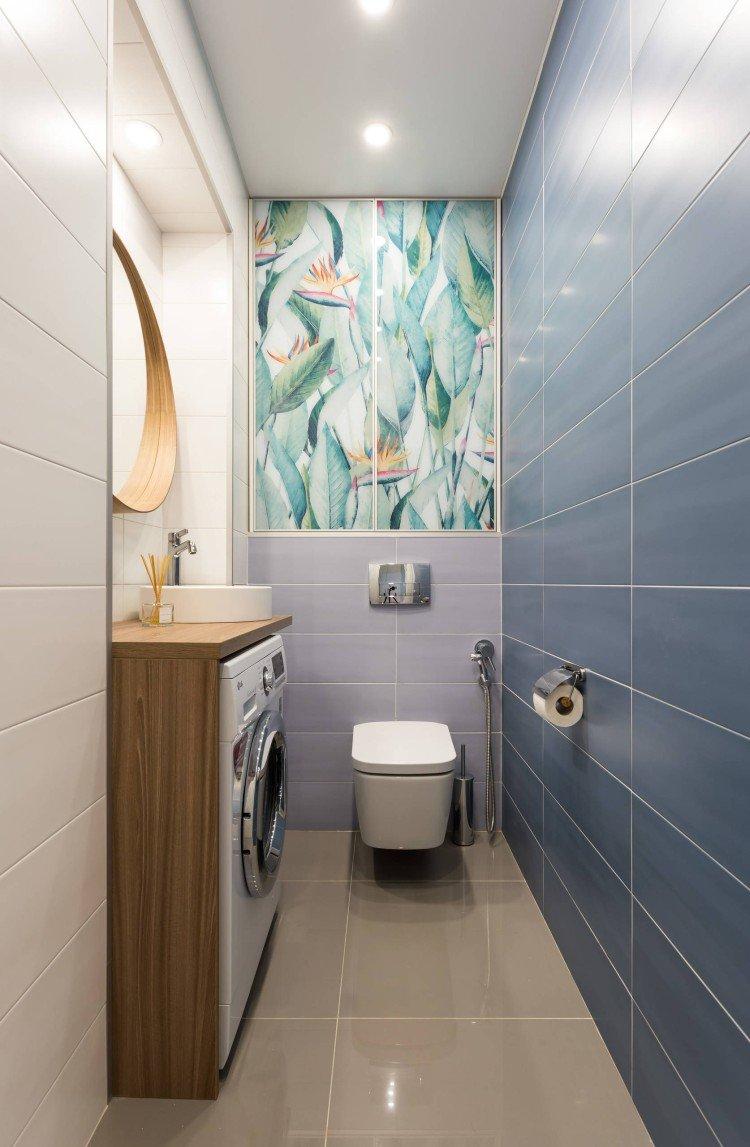
Wallpaper
Wallpaper is now used much less frequently, as they are not as practical as tiles, but they still require a long preparation of the base. If you prefer roll materials or can’t give up the perfect pattern you found, choose washable collections. Paper or textile on the walls of the bathroom will come to nothing in a few years.
Non-woven or vinyl wallpapers with a protective PVC layer are not afraid of moisture, do not swell or deform. You can clean them with a regular damp cloth or cleaning products. And if desired, you can easily repaint the surface, and in this case, the manufacturer even specifies how many times a particular series can be repainted.
Advantages of wallpaper include low cost, a large selection, ease of installation and the same ease of dismantling in the future. But even the best non-woven wallpaper is sensitive to mechanical damage. If, for example, a cat litter box is in the bathroom, the wallpaper is likely to wear out quickly.
Now there are more practical, durable, and interesting materials. These are textured high-strength glass wallpapers with expressive patterns or original liquid wallpapers that resemble decorative plaster. They last longer and better, but they are significantly more expensive, and the range is still not as great.
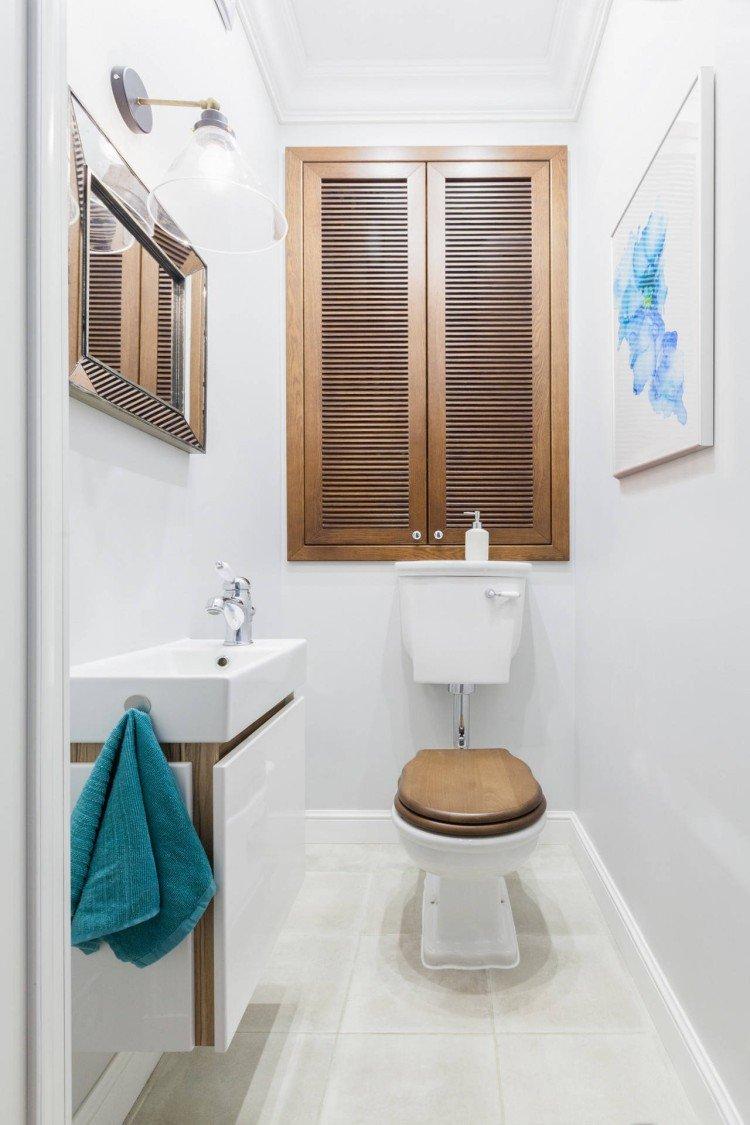
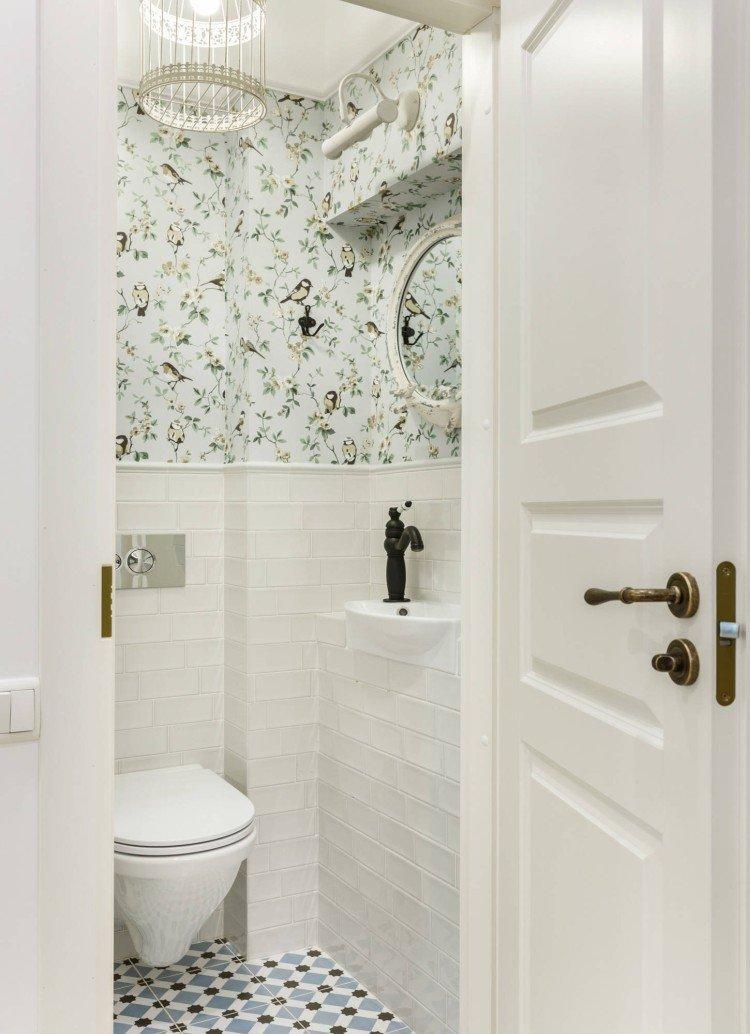
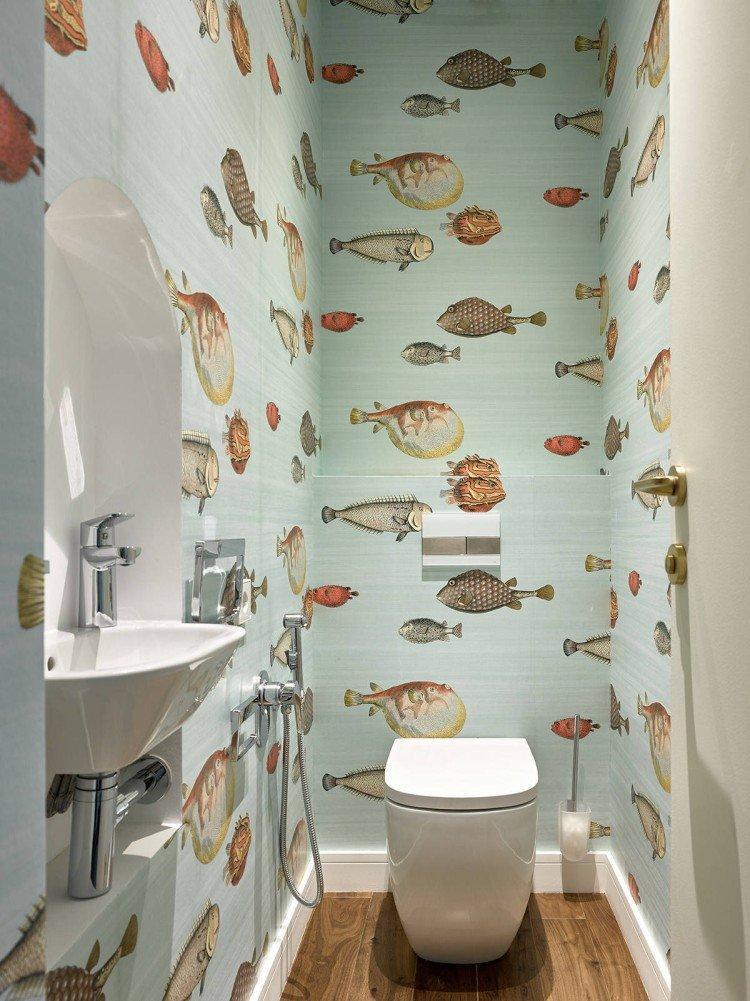


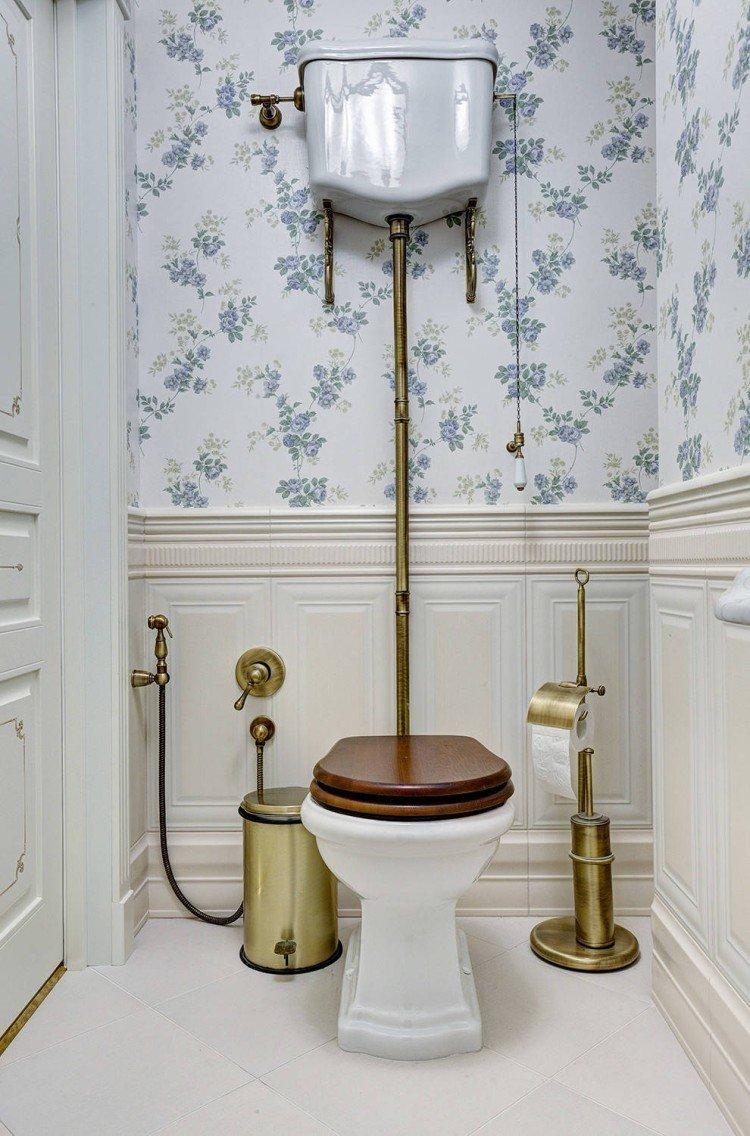
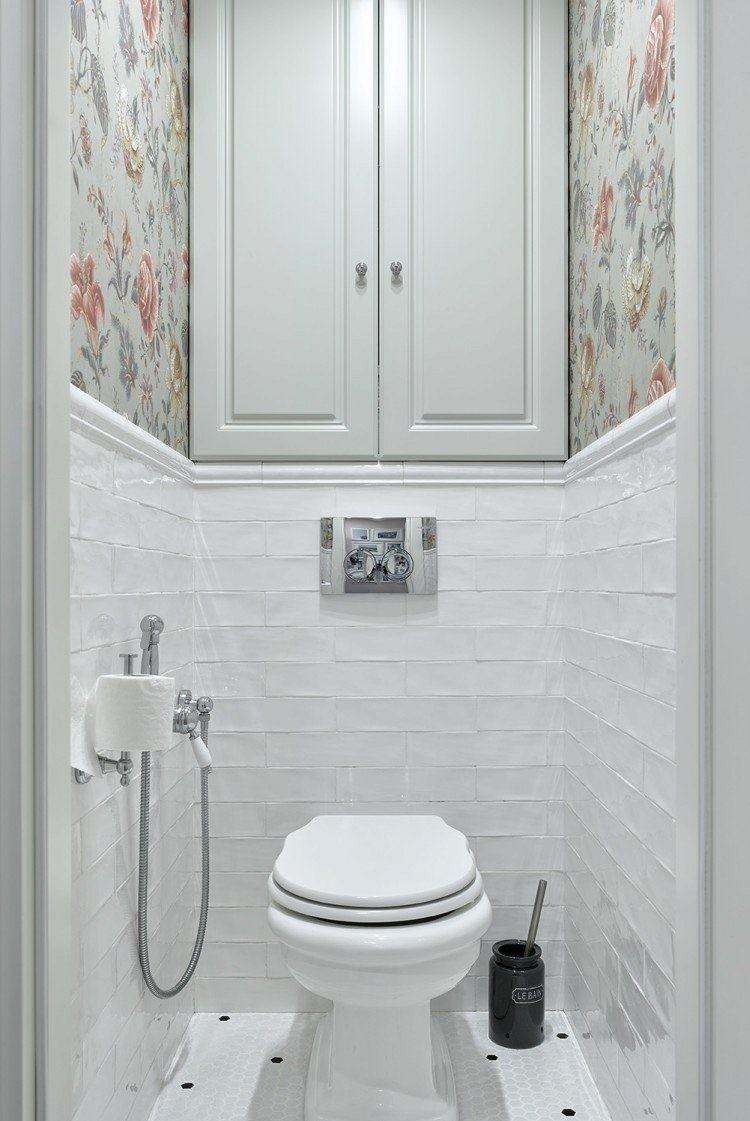
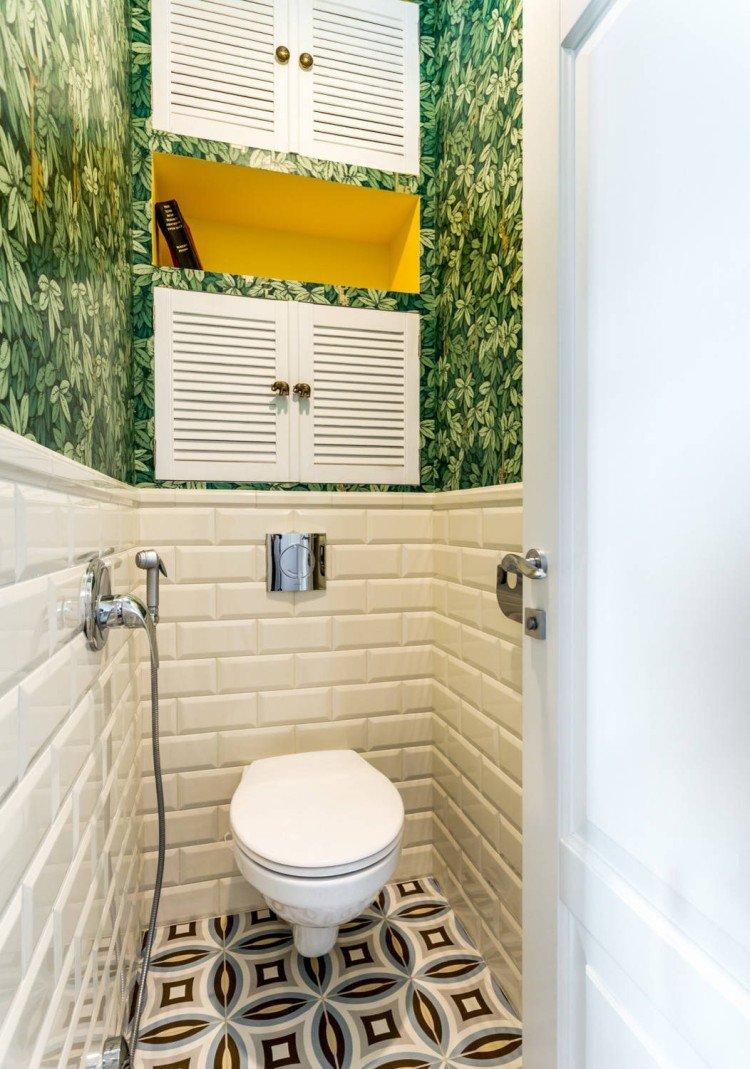
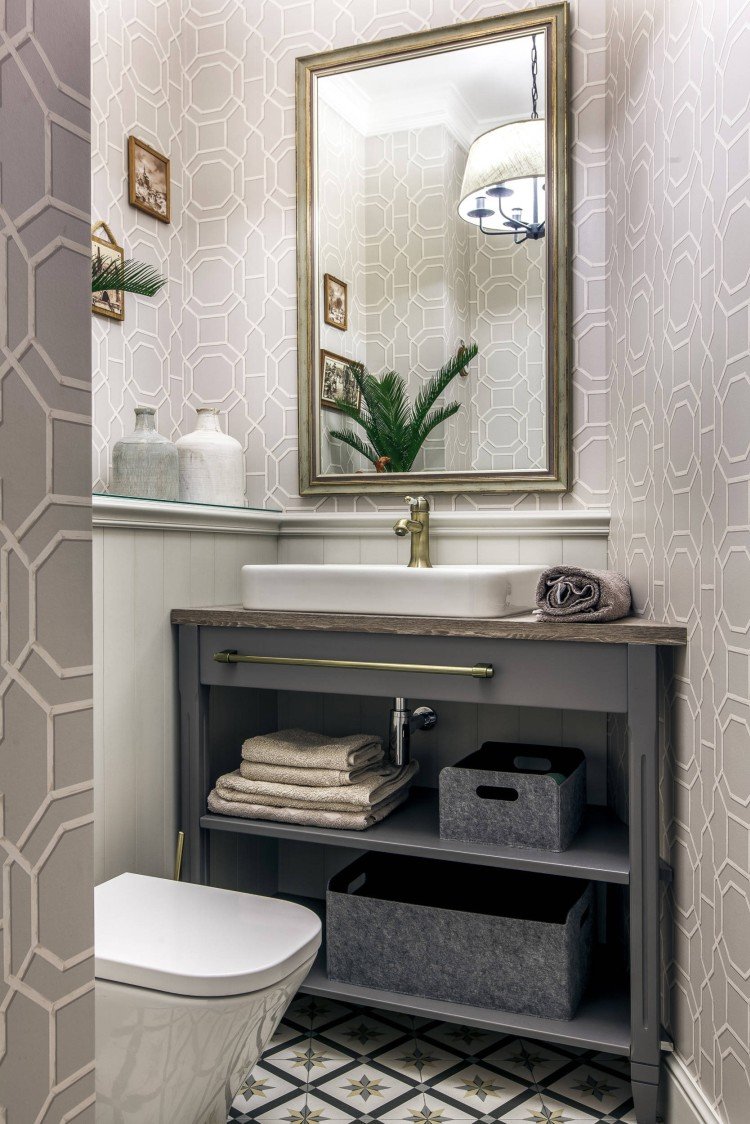
More and more often, the simplest painting is replacing any finishing materials for walls. It’s fast, convenient, and the interior can always be refreshed literally in an hour with a roller and a new can. Bare painted walls are the basis of most minimalist interiors.
To paint, you will have to level the base and get rid of all defects in the same way. But there is another option – use textured decorative plaster. It can be toned or painted over, depending on your collection.
The main advantage of painting is the ability to find or mix absolutely any color. There are even special equipment or software programs that know what proportions to mix for a specific shade. Plus, painting doesn’t take up valuable space like cladding panels or even tiles.
For the bathroom, choose moisture-resistant and washable water-based paints or specialized compositions. This must be an environmentally friendly material for interior decoration, not for exterior work. In stores, there are not only ordinary matte but also satin or glossy coatings and mixtures with various decorative additives.
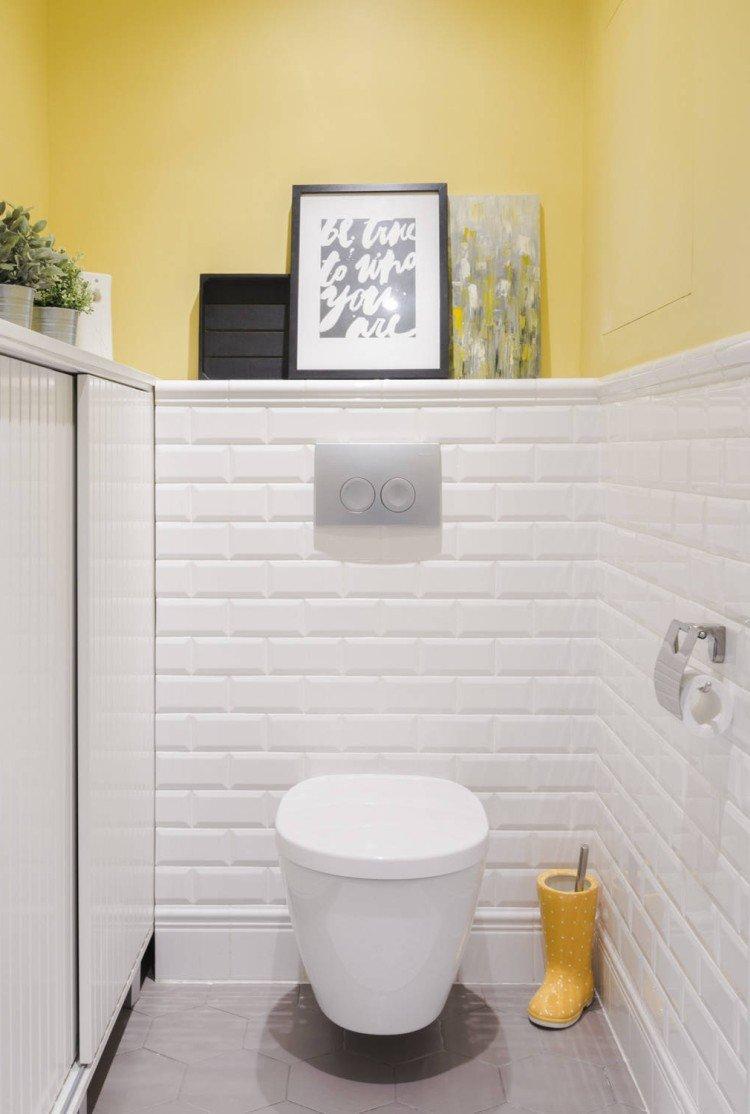
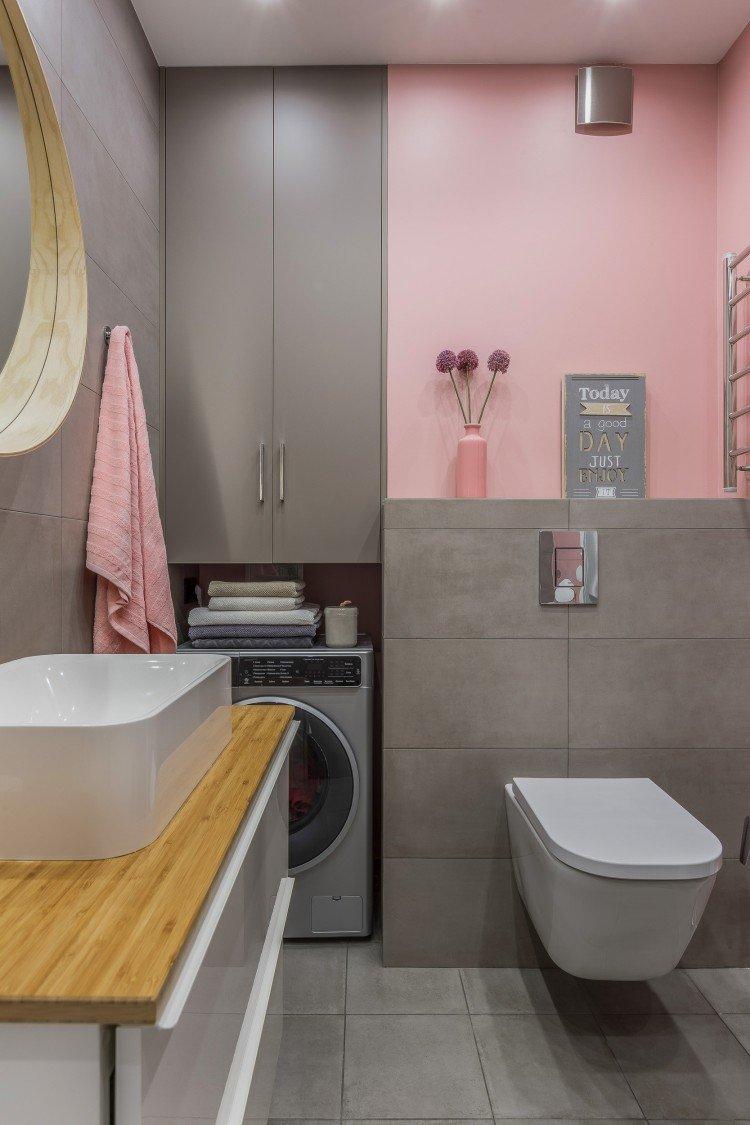
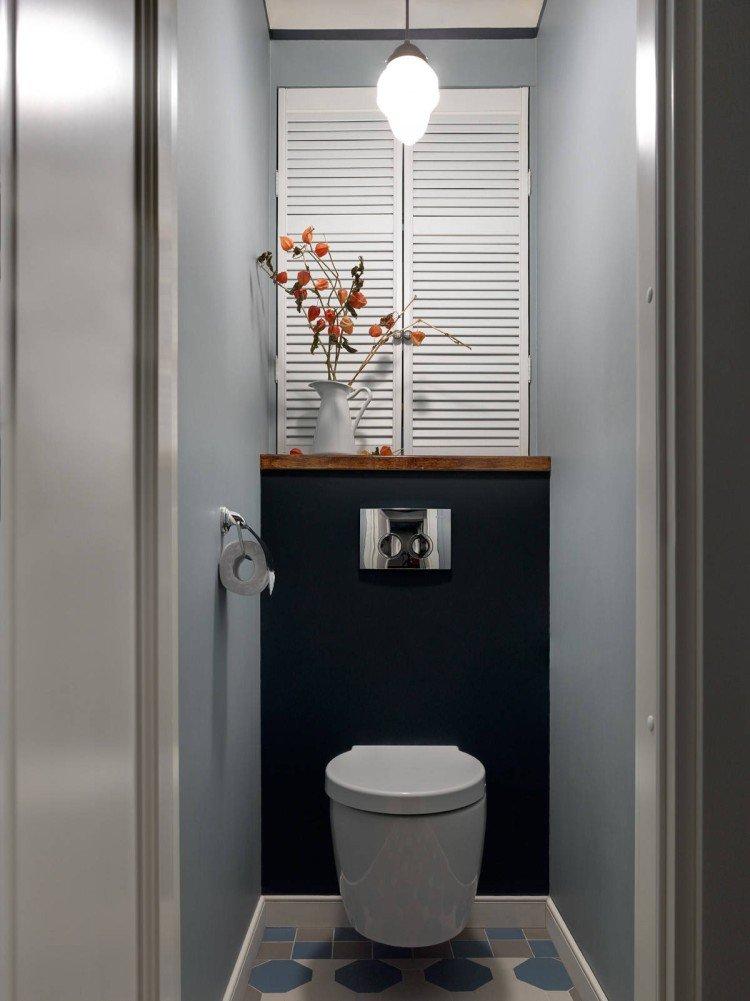
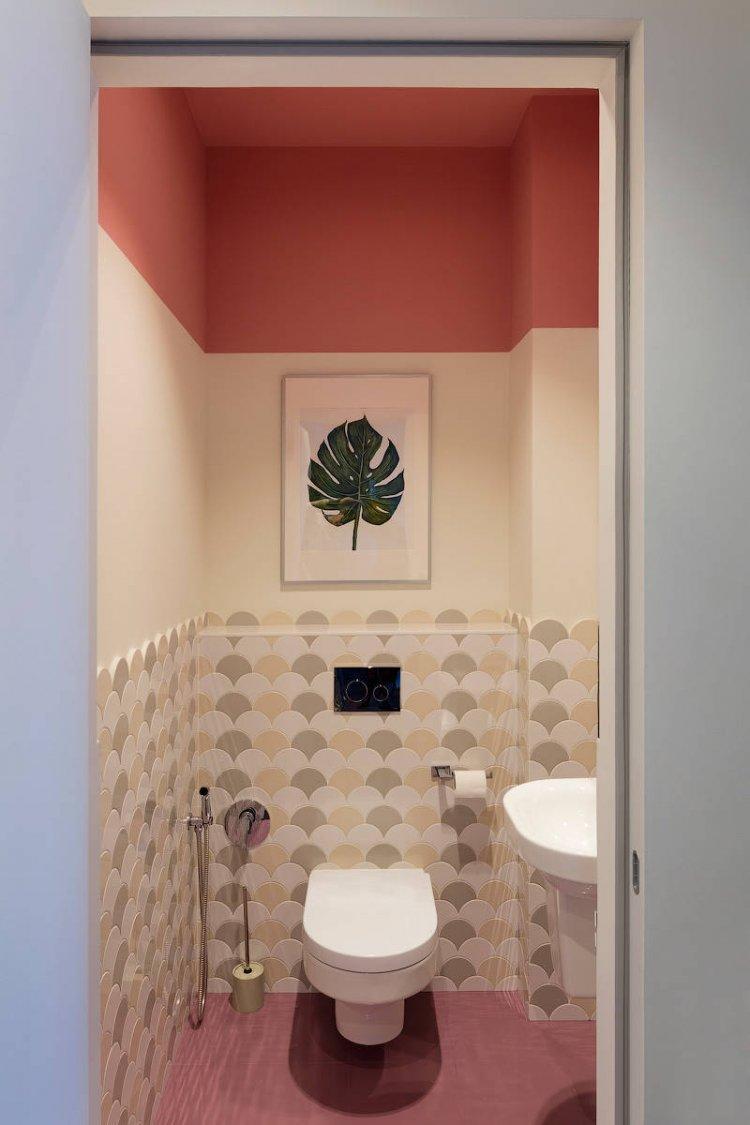
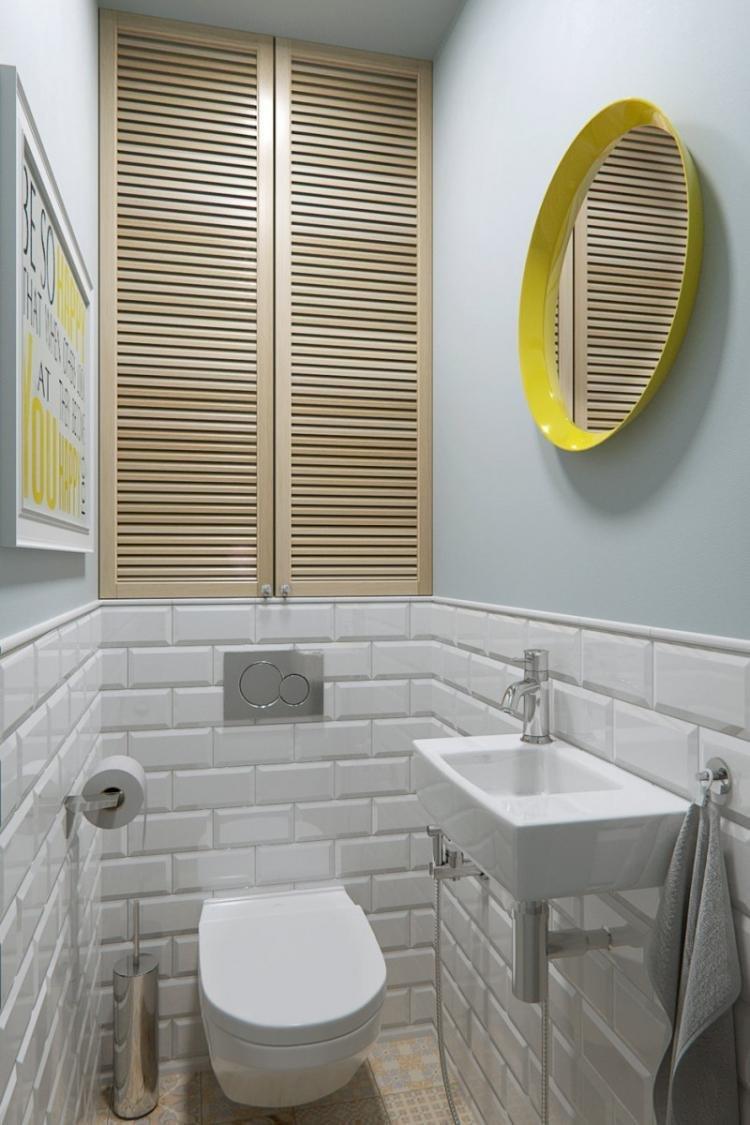
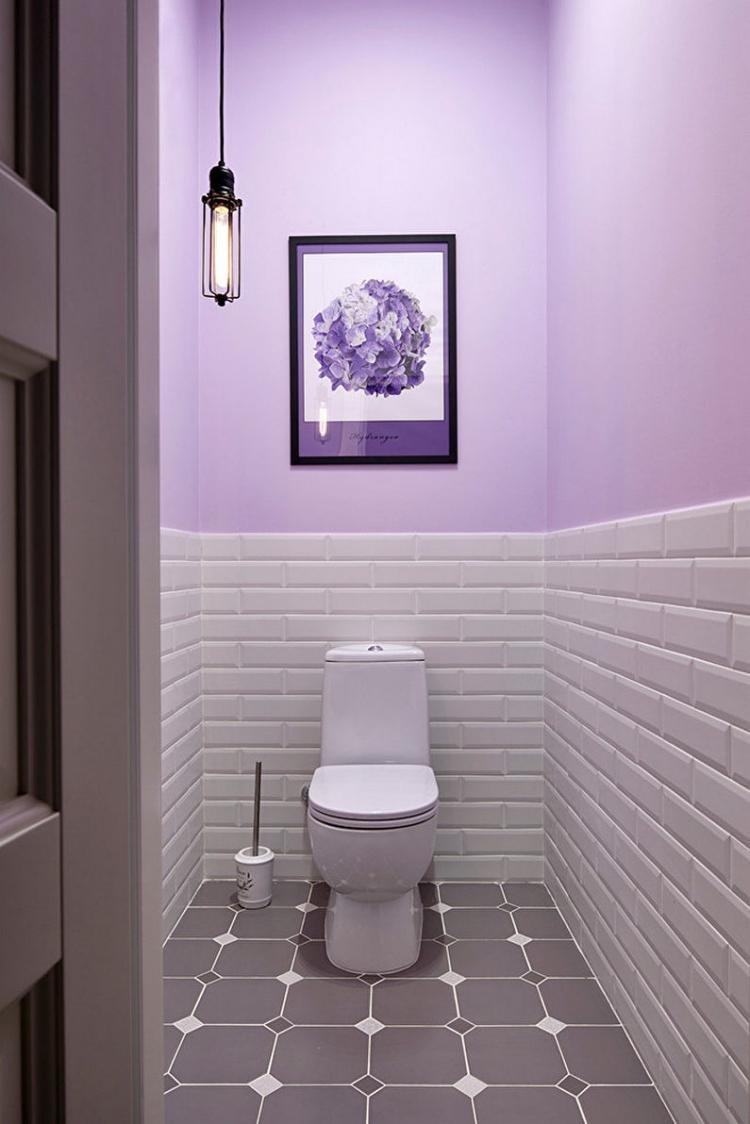
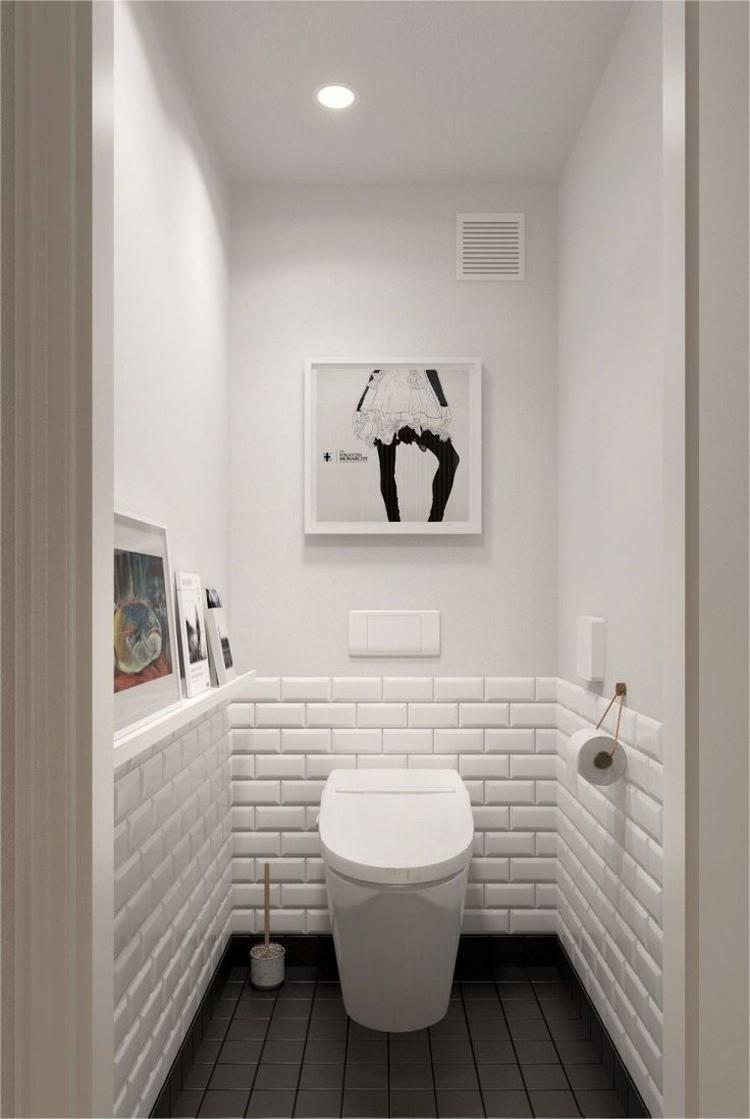
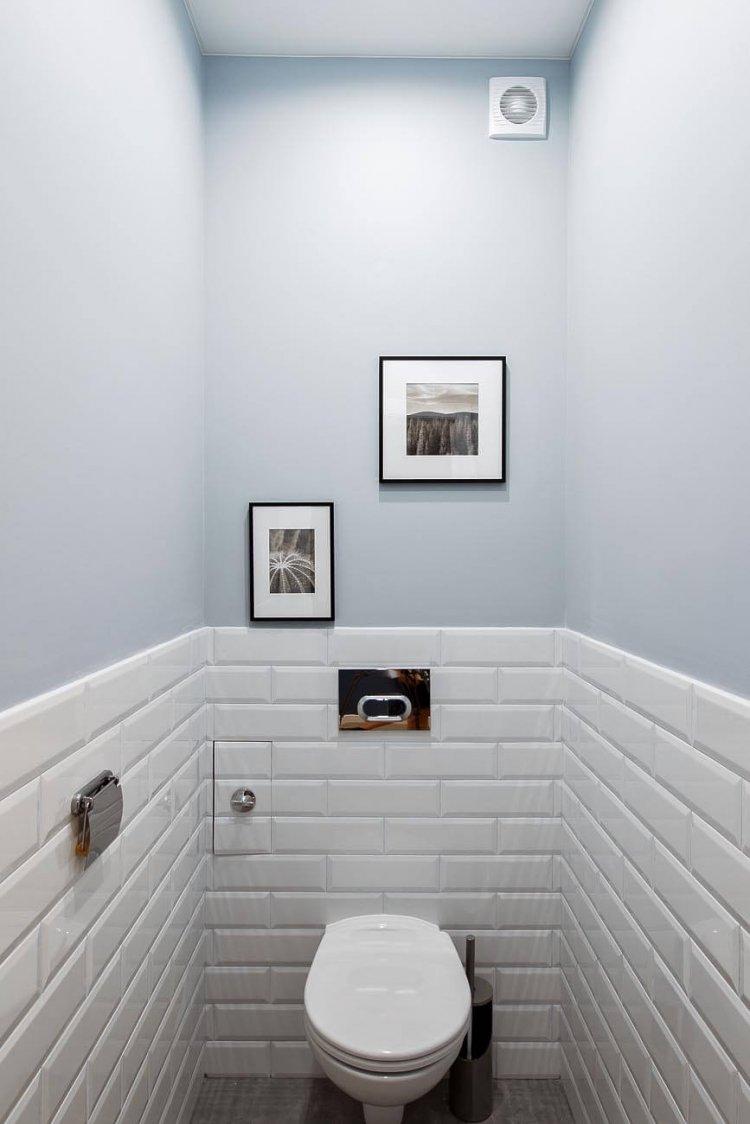
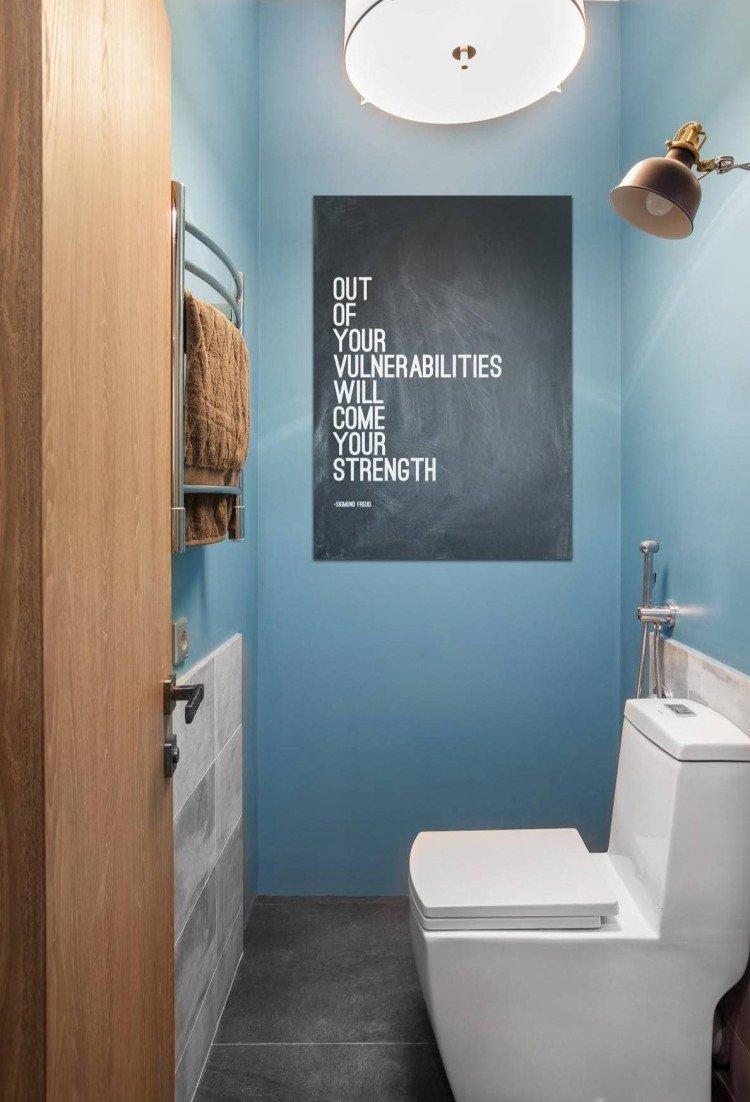
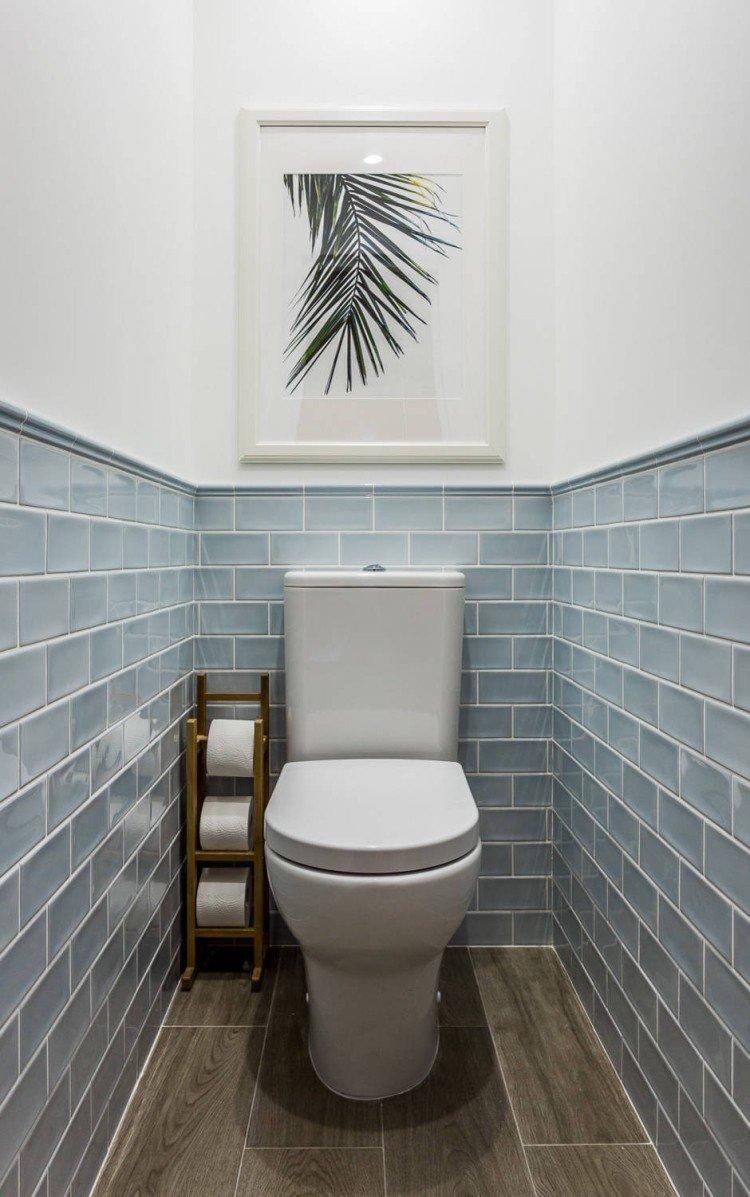
Plastic panels
The classic budget option for finishing bathroom walls is plastic panels, under which it is so convenient to hide communications, uneven walls, and even the old coating as a whole. These panels can be of any color and even different textures – including imitation of other materials. Such panels are laid on a frame and are most often equipped with locks, so it is easy to handle them even on your own.
Plastic is not afraid of moisture, it is difficult to scratch, and easy to clean, and damaged panels can be quickly replaced without dismantling the entire coating. But there are problems: panels can crack or split if dropped or hit. The material is not environmentally friendly and does not allow air to pass through, so the wall surface needs to be pre-treated with antifungal agents.
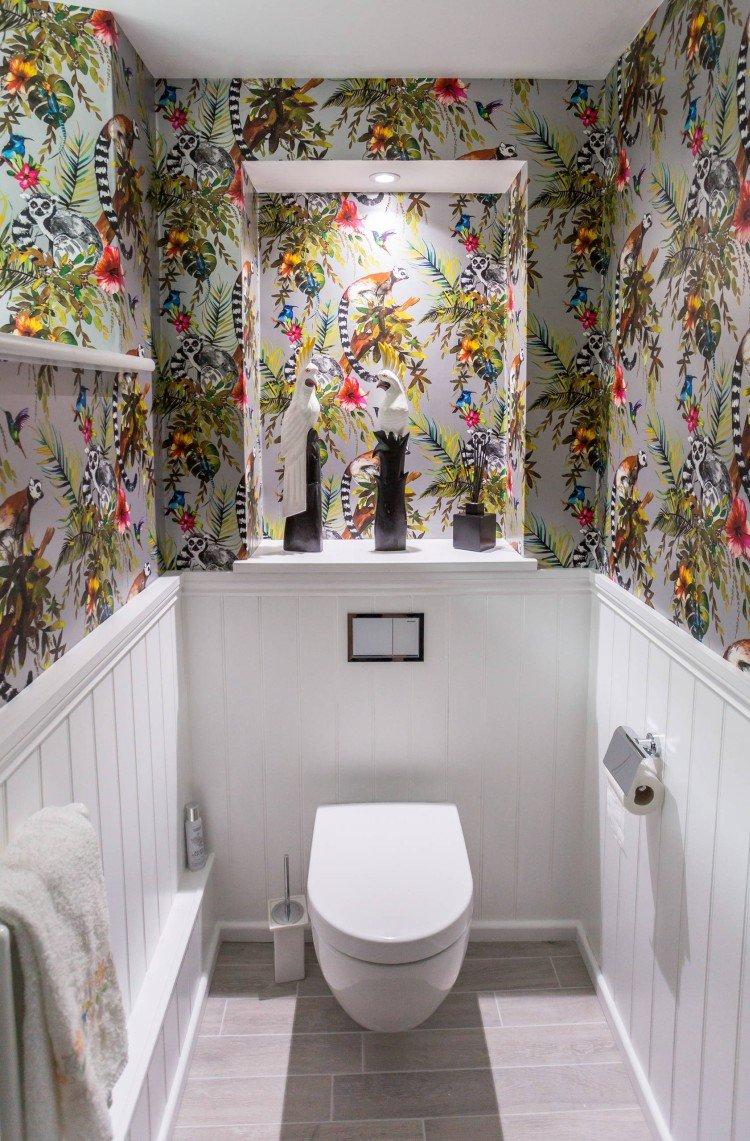
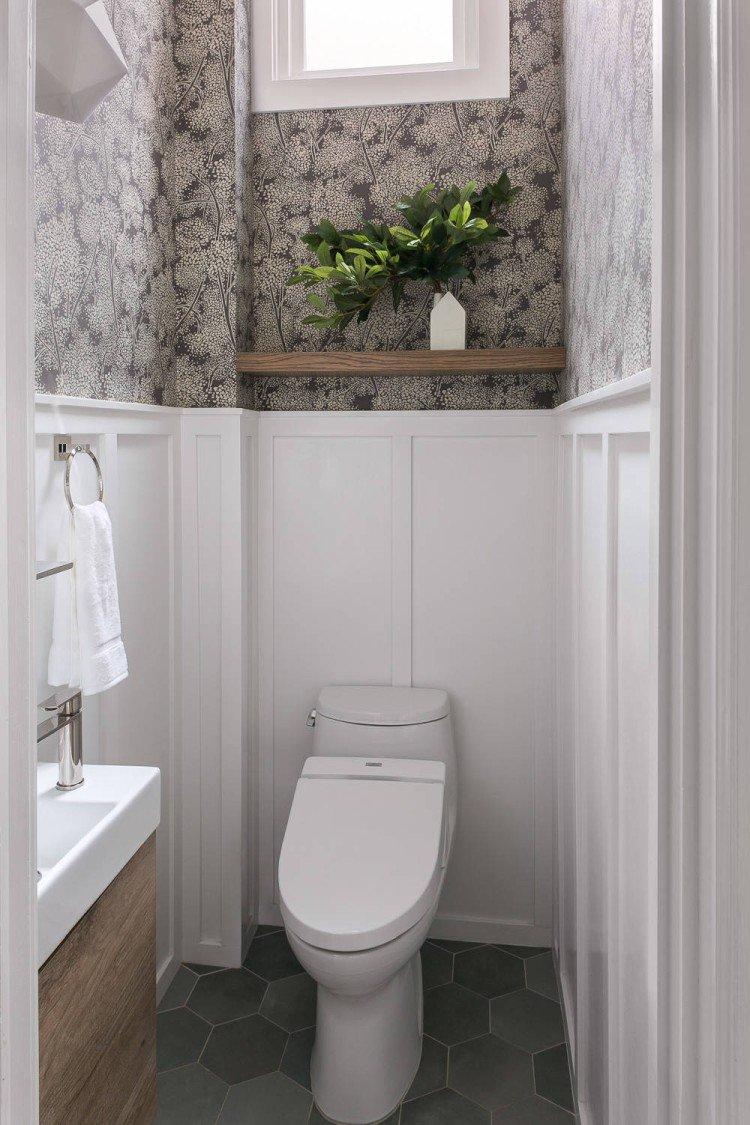
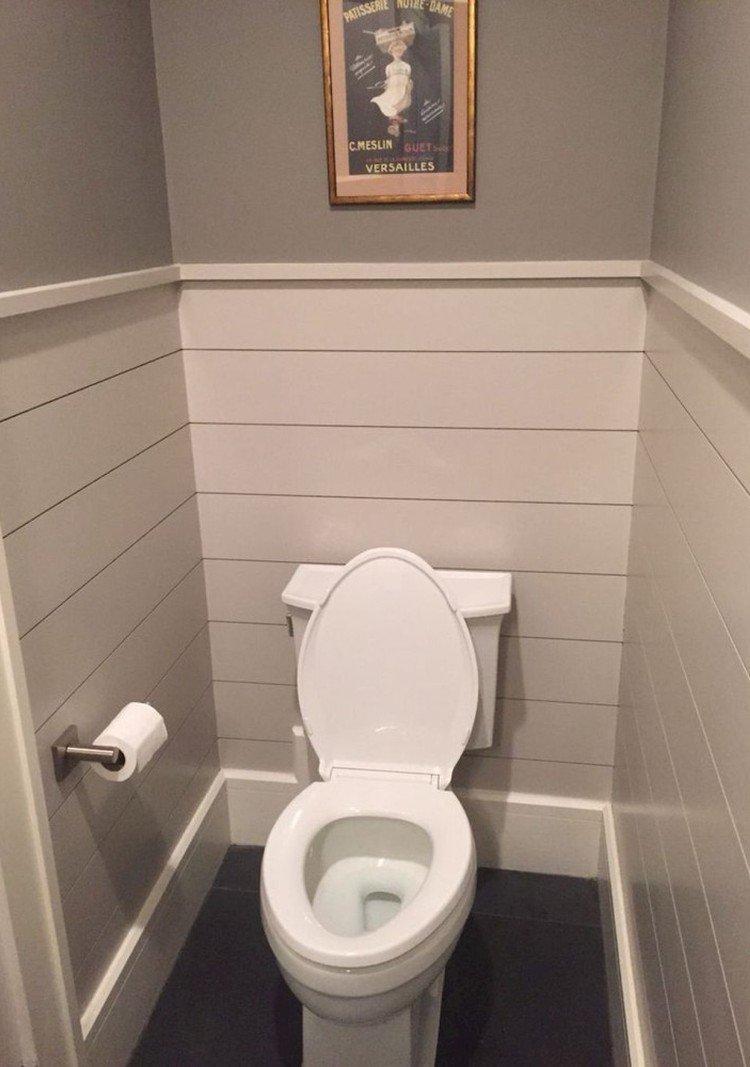
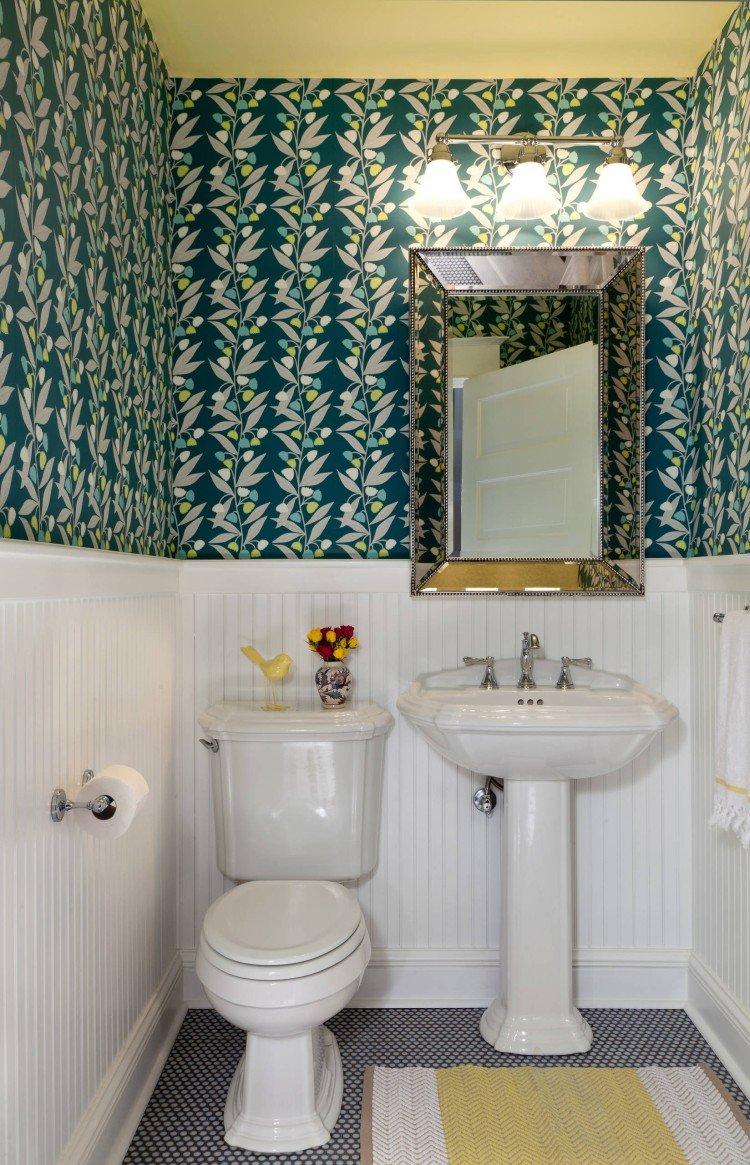
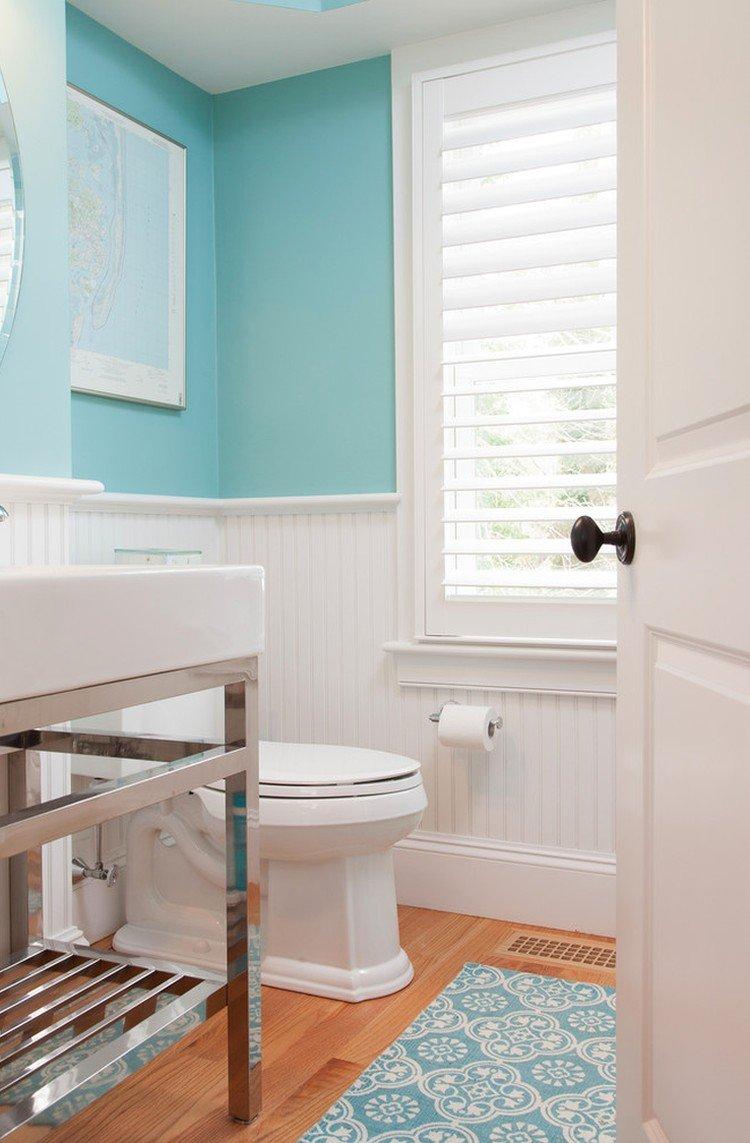
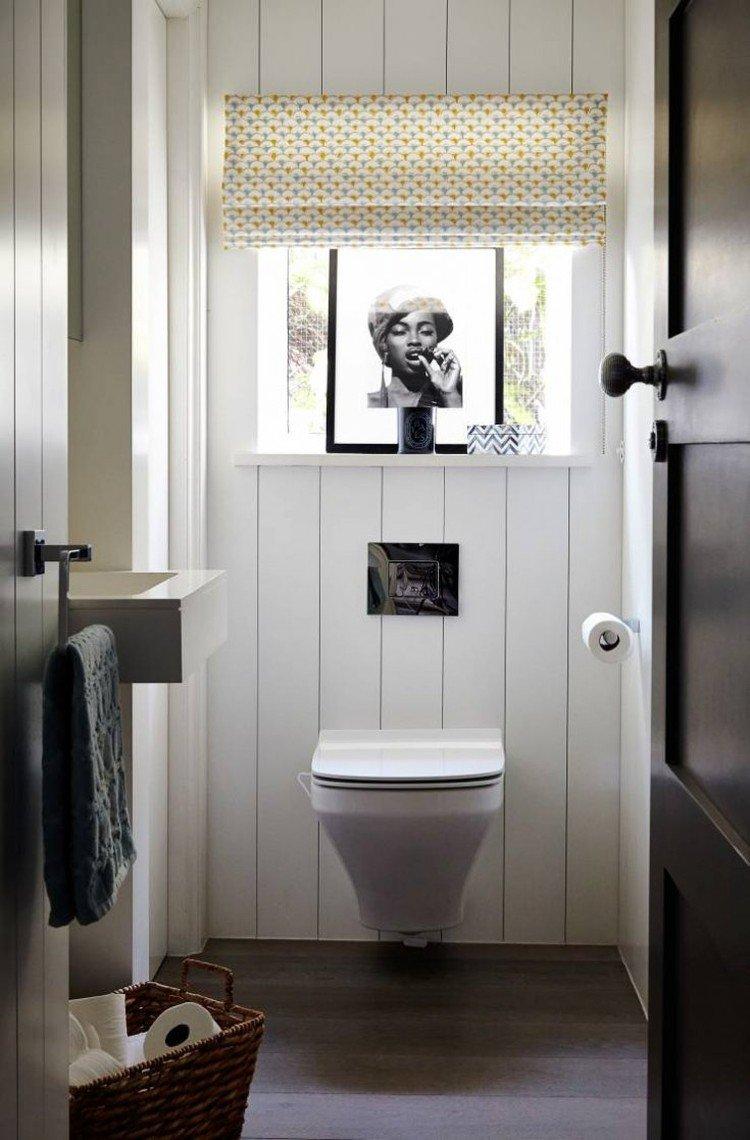
Decorative Stone
Decorative stone is a kind of compromise between ceramic tiles and natural rocks. Depending on the composition, there are different types, but their properties are almost the same. The characteristics of acrylic and other artificial stones almost match those of natural ones.
Compared to marble or granite, decorative stone has four significant advantages. It is cheaper, much lighter, less capricious in care, and has a much wider selection of textures since you can create an imitation of almost any rock. Compared to tiles, stone looks more solid and noble but is more expensive.
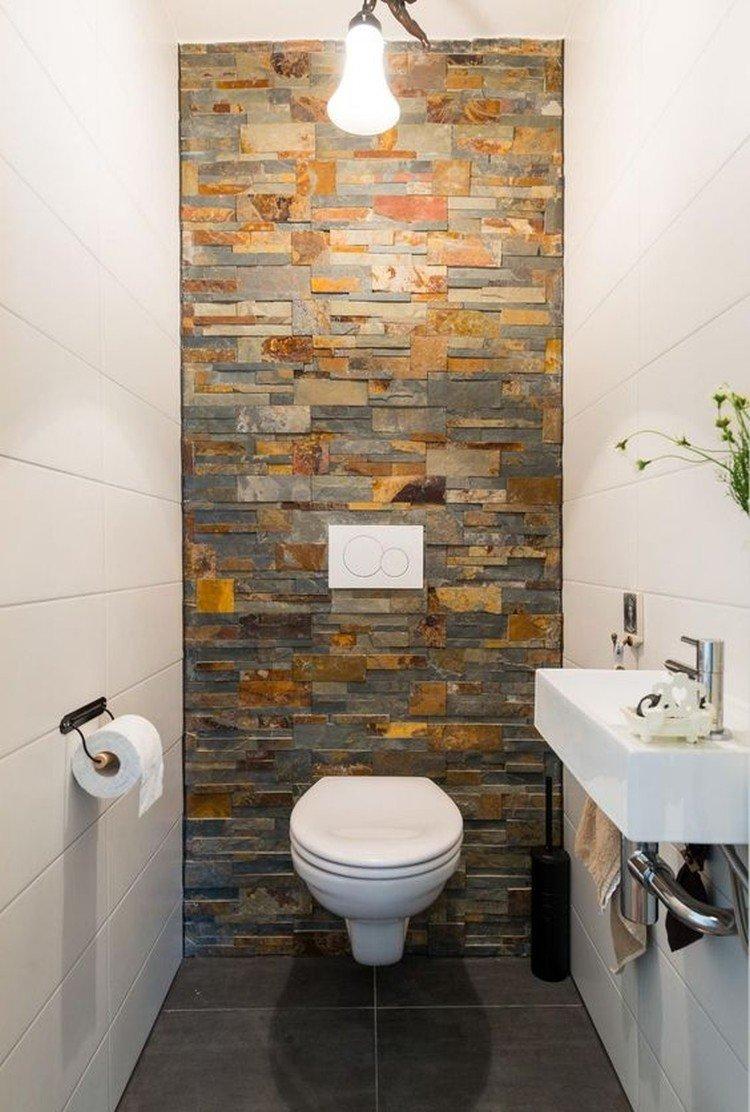
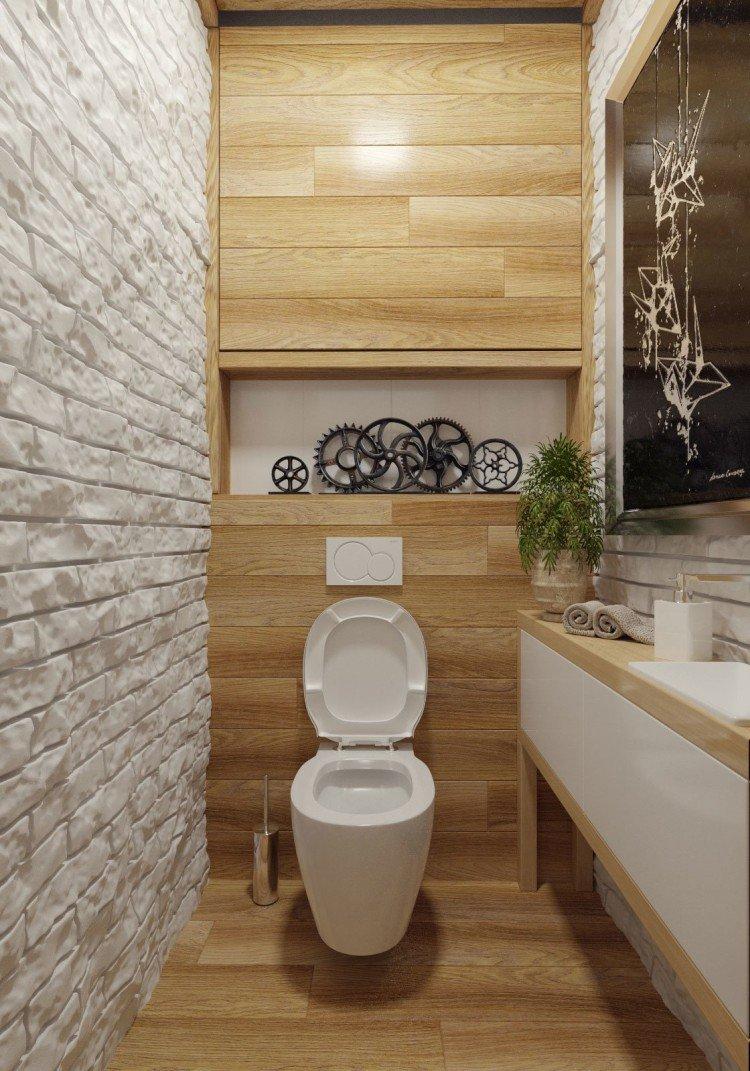
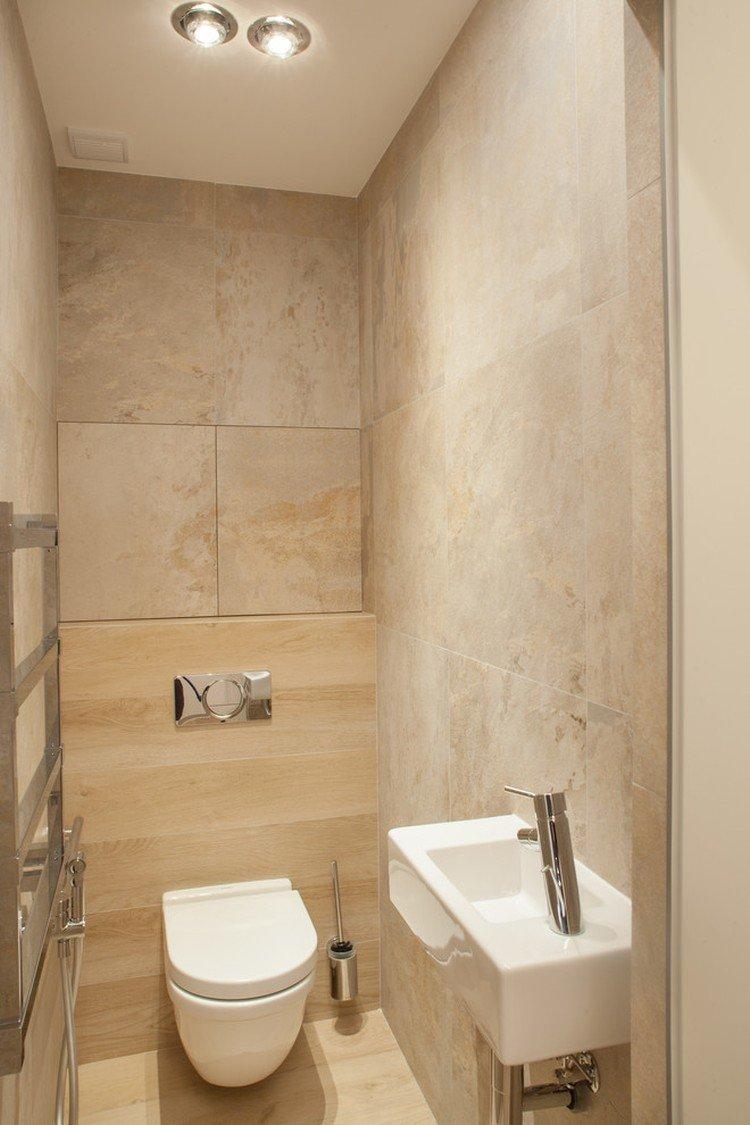

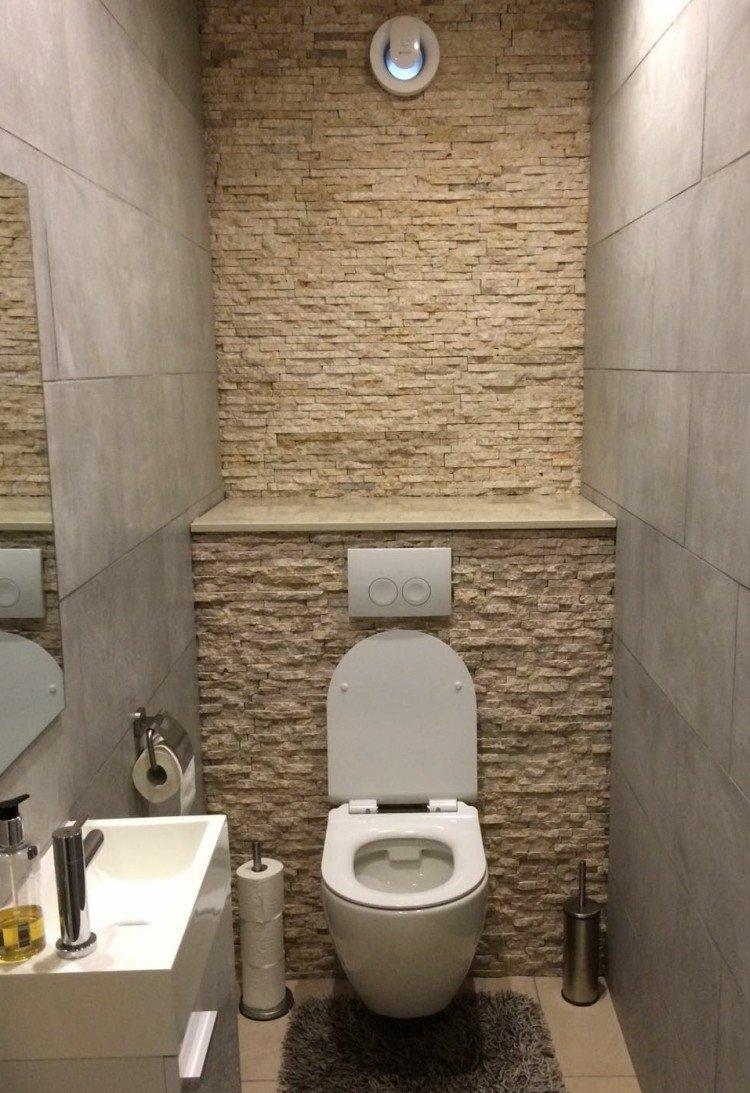
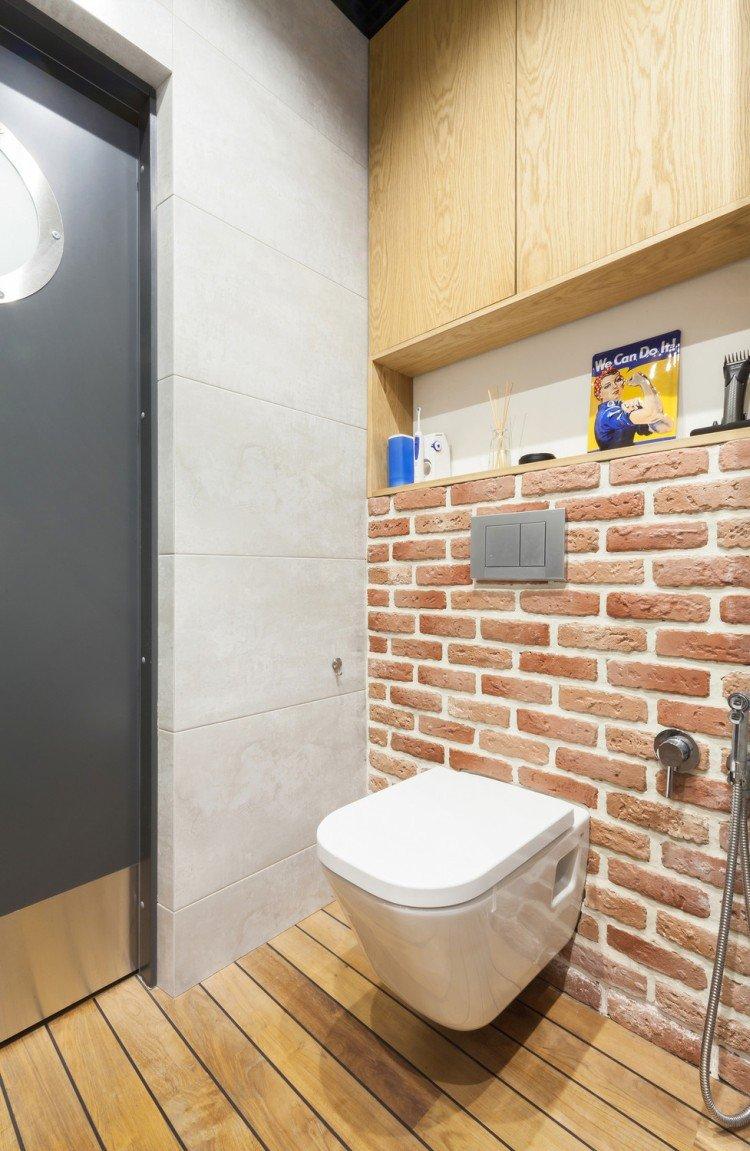
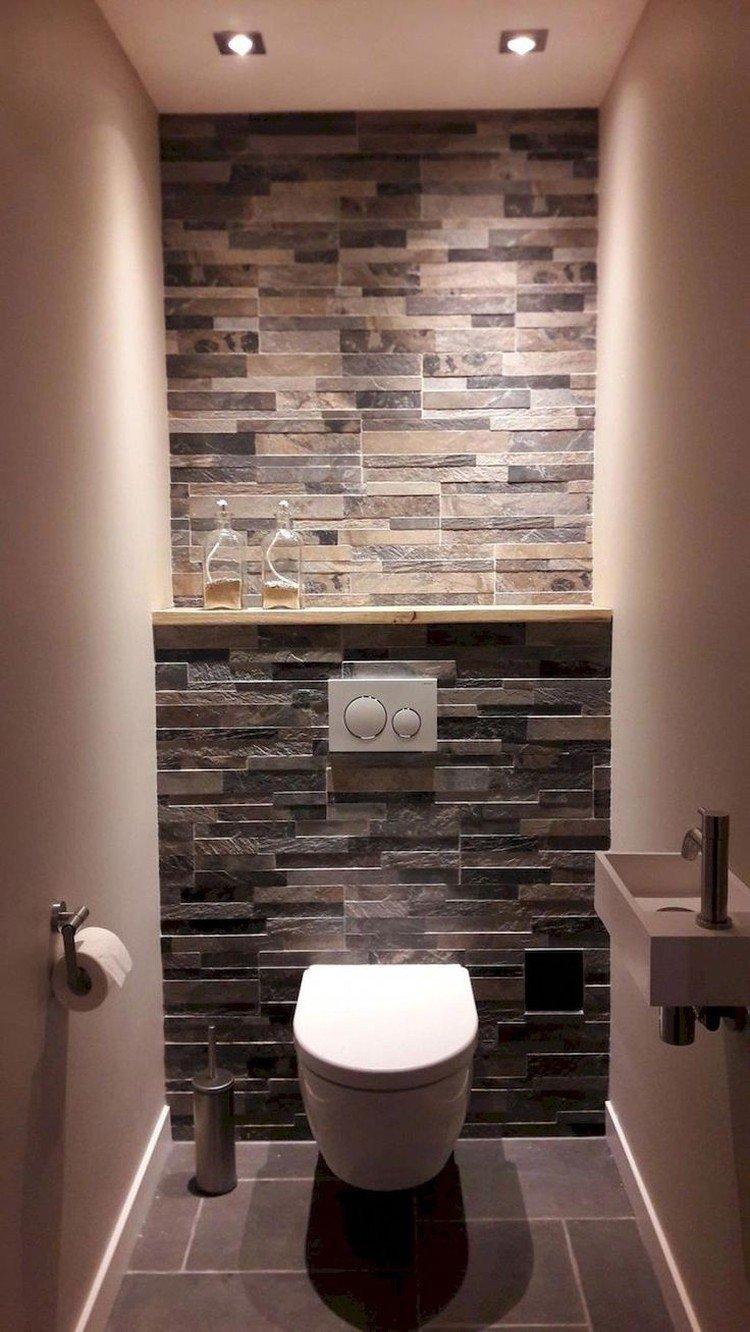
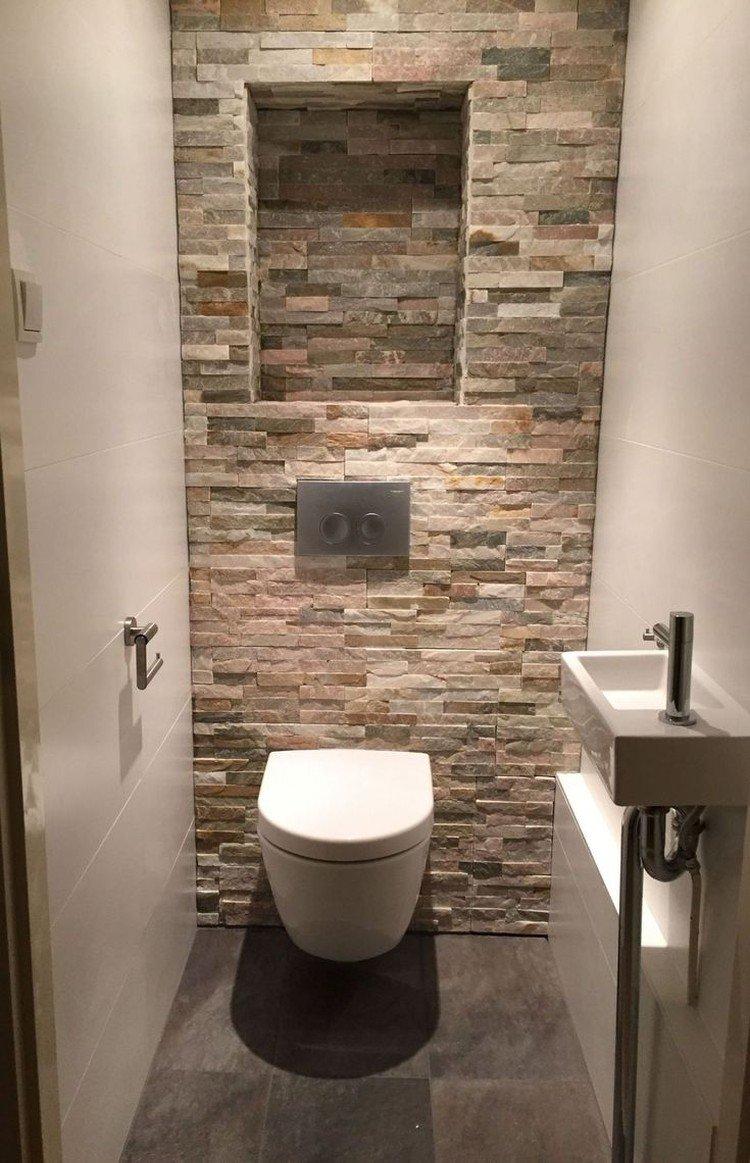
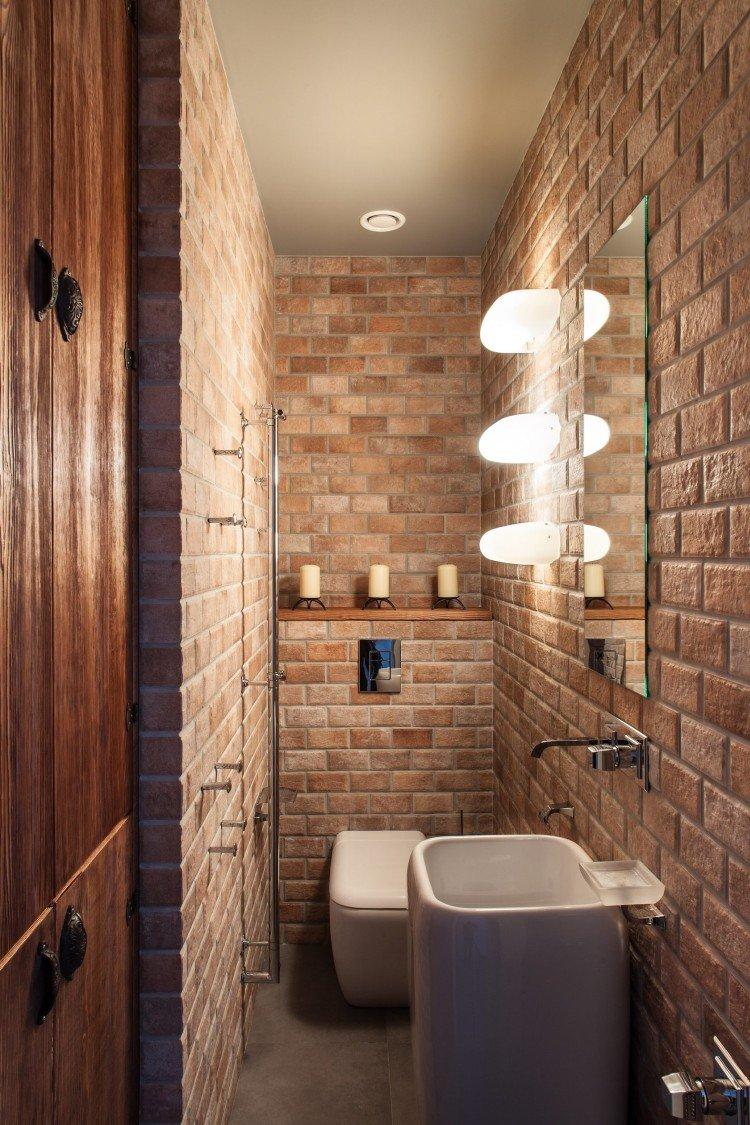
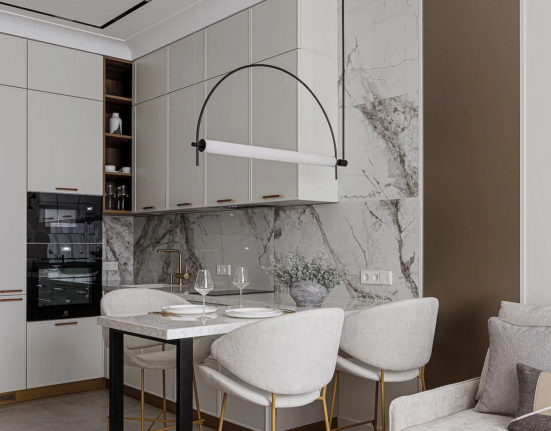
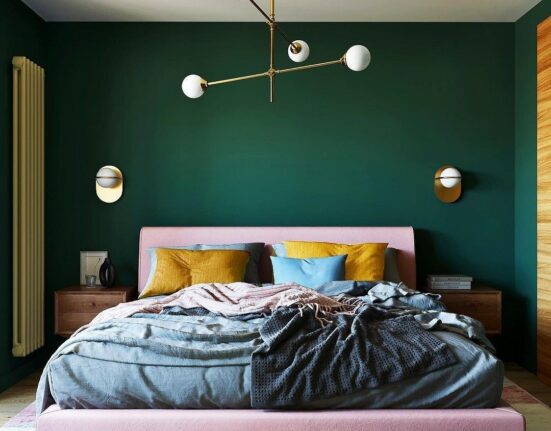
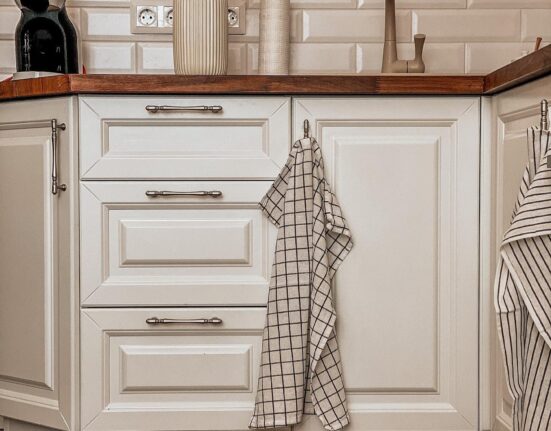
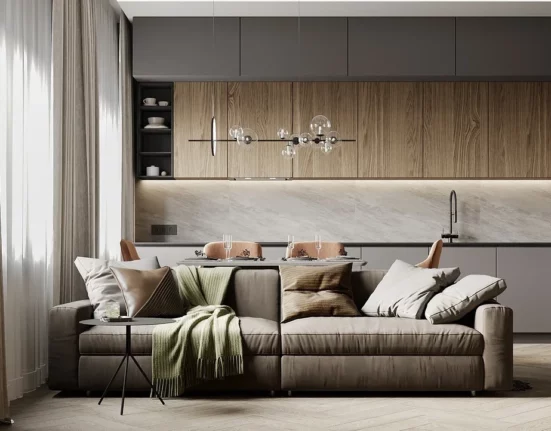
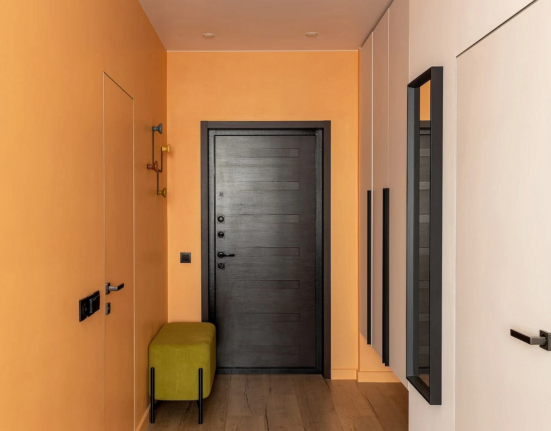
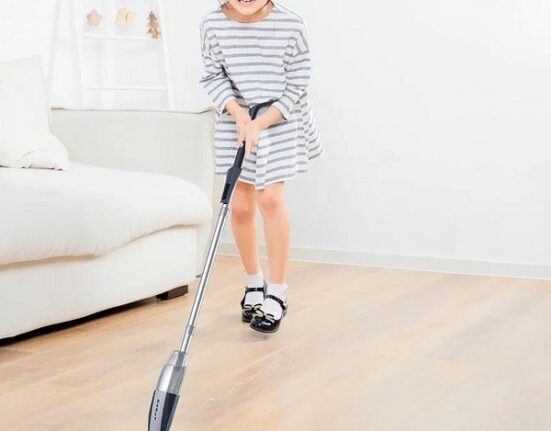
Leave feedback about this